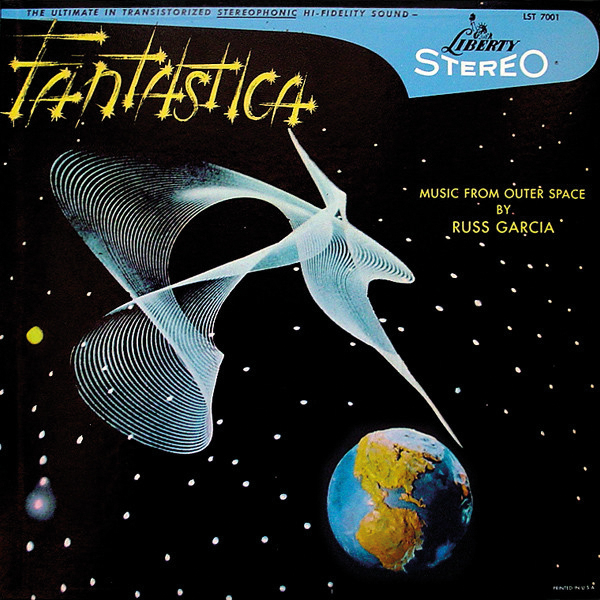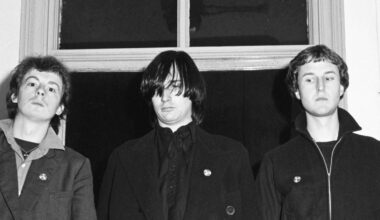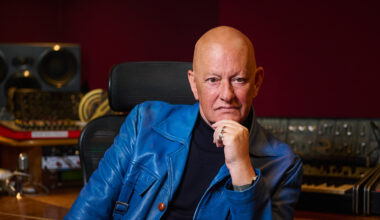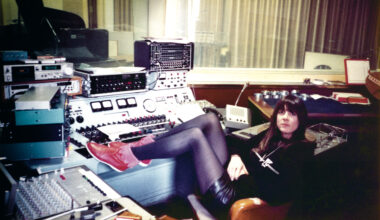Space disco? Check. Space funk? Check. Space rock and space jazz? Check and check. But let’s also not forget all manner of electronica, pop, ambient, dark ambient, electro, techno, exotica, psych, hip hop, post-punk, post-rock, and a lot more besides. We’re talking kosmische musik in its full glory here…
RUSS GARCIA & HIS ORCHESTRA
‘Fantastica: Music From Outer Space’
(Liberty, 1958)

American composer Russ Garcia brought a touch of weirdo electronica to the steamy world of exotica with this entertaining album of space age pop. As well as the orchestral elements – violins, cellos, flutes, oboes, percussion – there are lots of ethereal female vocals and atmospheric effects, including a bubbling sound that lasts the full four minutes of ‘Volcanoes Of Mercury’. The record was released the same year that the National Aeronautics and Space Administration (NASA) began operations.
THE TORNADOS
‘Telstar’
(Decca, 1962)
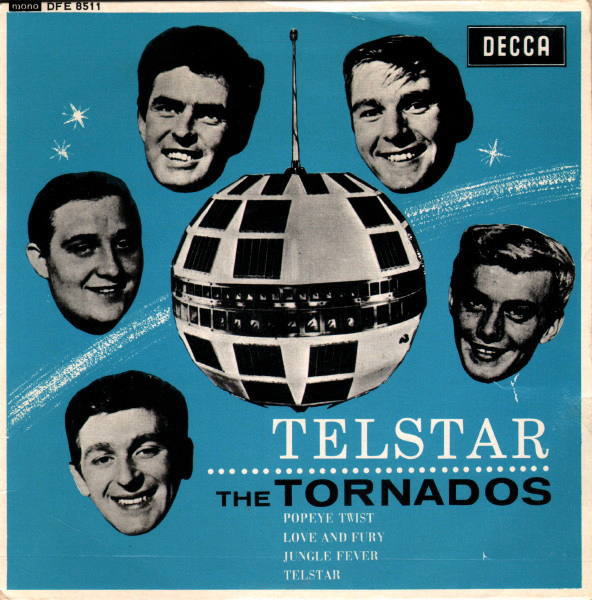
Written and produced by pioneering sound sculptor Joe Meek, ‘Telstar’ was named after Telstar 1, the first active communications satellite, which was launched in July 1962. The track featured a Clavioline, an early mass market electronic keyboard instrument, and was a Number One single in both the UK and the US, making The Tornados the first British group to top the American charts.
TOM DISSEVELT
‘Fantasy In Orbit’
(Philips, 1963)
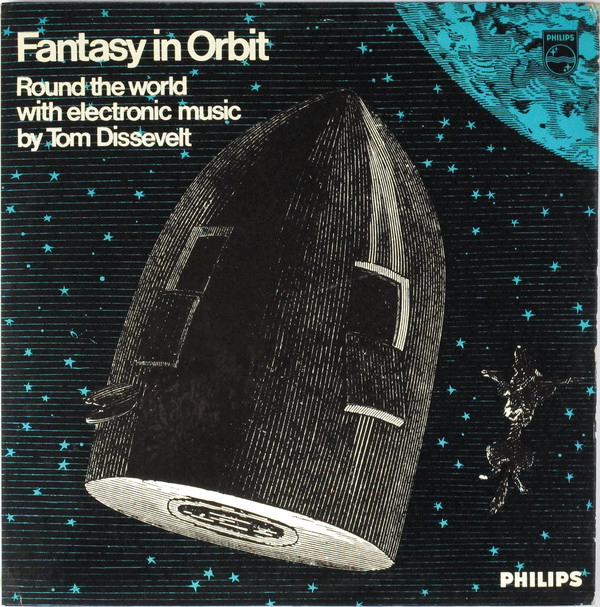
A great example of early pure electronic music by Dutch pioneer Tom Dissevelt, who first became interested in synthesisers while working as a researcher at the Philips Natuurkundig Laboratorium in Eindhoven. ‘Fantasy In Orbit’ starts with ‘Ignition’ and ends with ‘Re-Entry’. The tracks in between are what the sleeve notes describe as “the imaginary impressions of a human being orbiting the Earth”, something only six people (four Russians and two Americans) had done at the time of release.
PINK FLOYD
‘Interstellar Overdrive’
(Columbia, 1967)
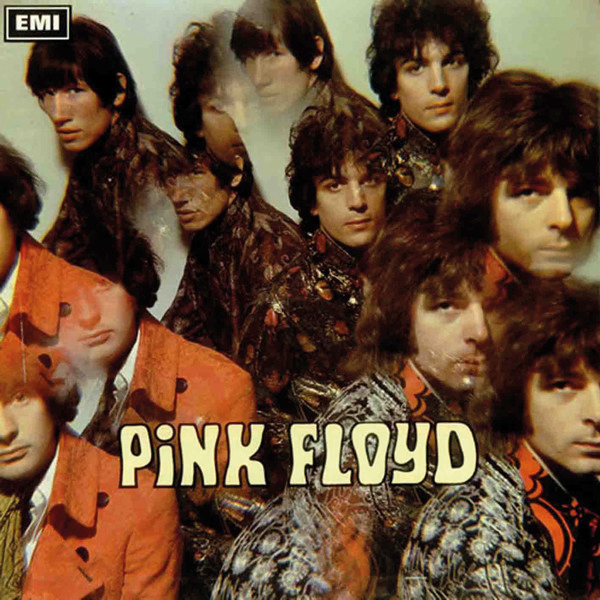
Pink Floyd’s interest in space goes right back to their ‘Piper At The Gates Of Dawn’ debut album, which starts with ‘Astronomy Domine’ but is most notable for the multi-dimensional sonic starburst that is ‘Interstellar Overdrive’. Two years later, on the night of the Apollo 11 moon landing, the band jammed a track called ‘Moonhead’ live on BBC TV. Four more years later, Pink Floyd released their masterful lunar opus ‘Dark Side Of The Moon’, establishing them as one of the most successful acts of all time.
THE ROLLING STONES
‘2000 Light Years From Home’
(Decca, 1967)
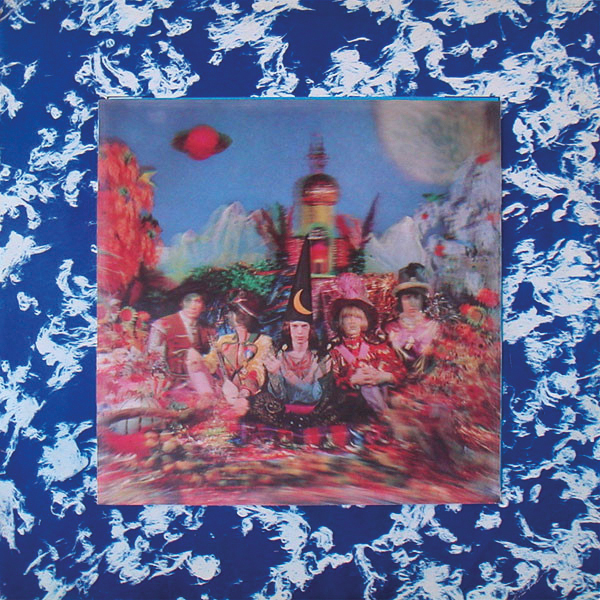
The penultimate track on the Stones’ psych-fest ‘Their Satanic Majesties Request’, ‘2000 Light Years From Home’ features some superbly spacey strings courtesy of Brian Jones on the Mellotron, even though he’s said to have barely touched a keyboard of any description prior to the ‘Satanic Majesties’ sessions. “A combination of the music of the spheres and sounds that might have been picked up by Jodrell Bank,” wrote Keith Altham in his NME review.
THE BYRDS
‘Space Odyssey’
(CBS, 1968)
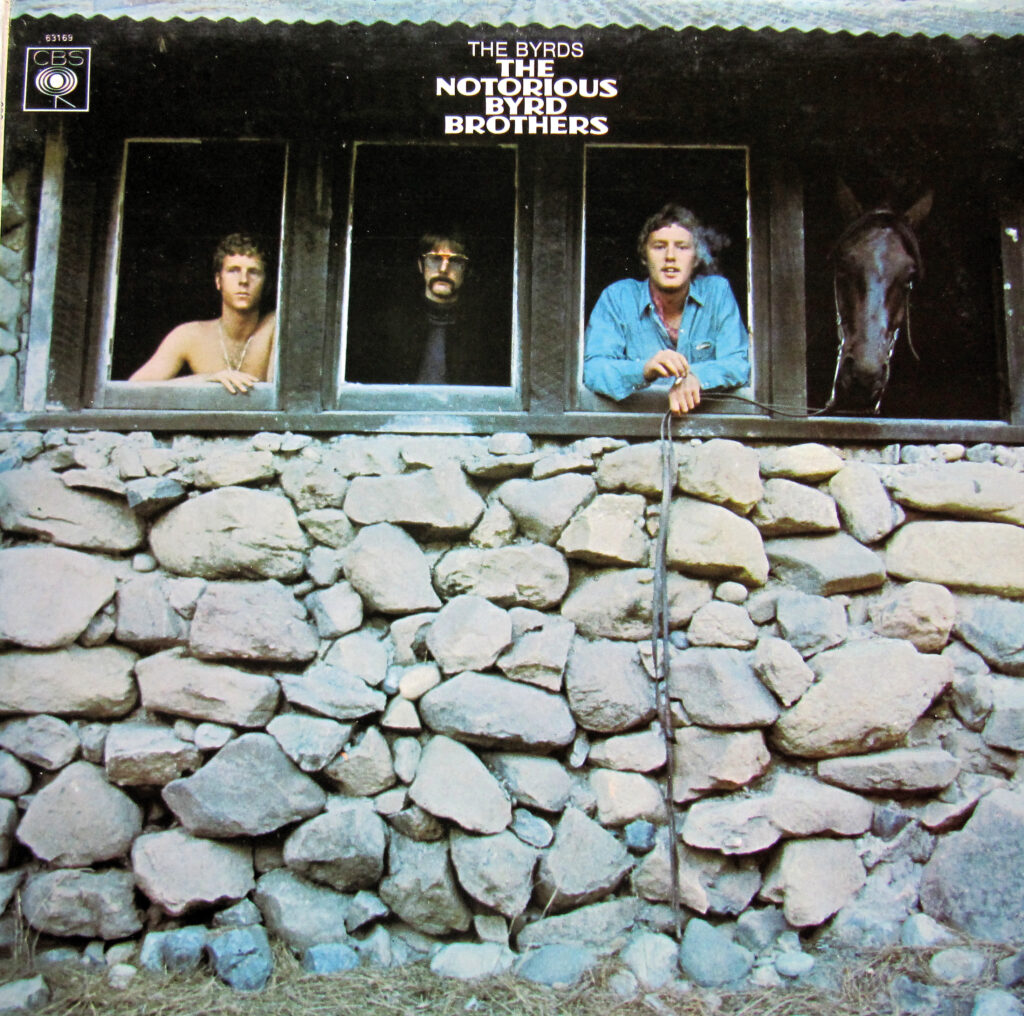
The Byrds had a thing about space travel (see also ‘Mr Spaceman’ and ‘Armstrong, Aldrin And Collins’). They also had a thing about the then new-fangled Moog, which is all over ‘The Notorious Byrd Brothers’ (the album that ‘Space Odyssey’ closes) mainly played by Paul Beaver from Beaver & Krause. Like Stanley Kubrick’s ‘2001: A Space Odyssey’ film, this was inspired by Arthur C Clarke’s short story ‘The Sentinel’, but The Byrds got in first, releasing the track three months before the movie came out.
DAVID BOWIE
‘Space Oddity’
(Philips, 1969)
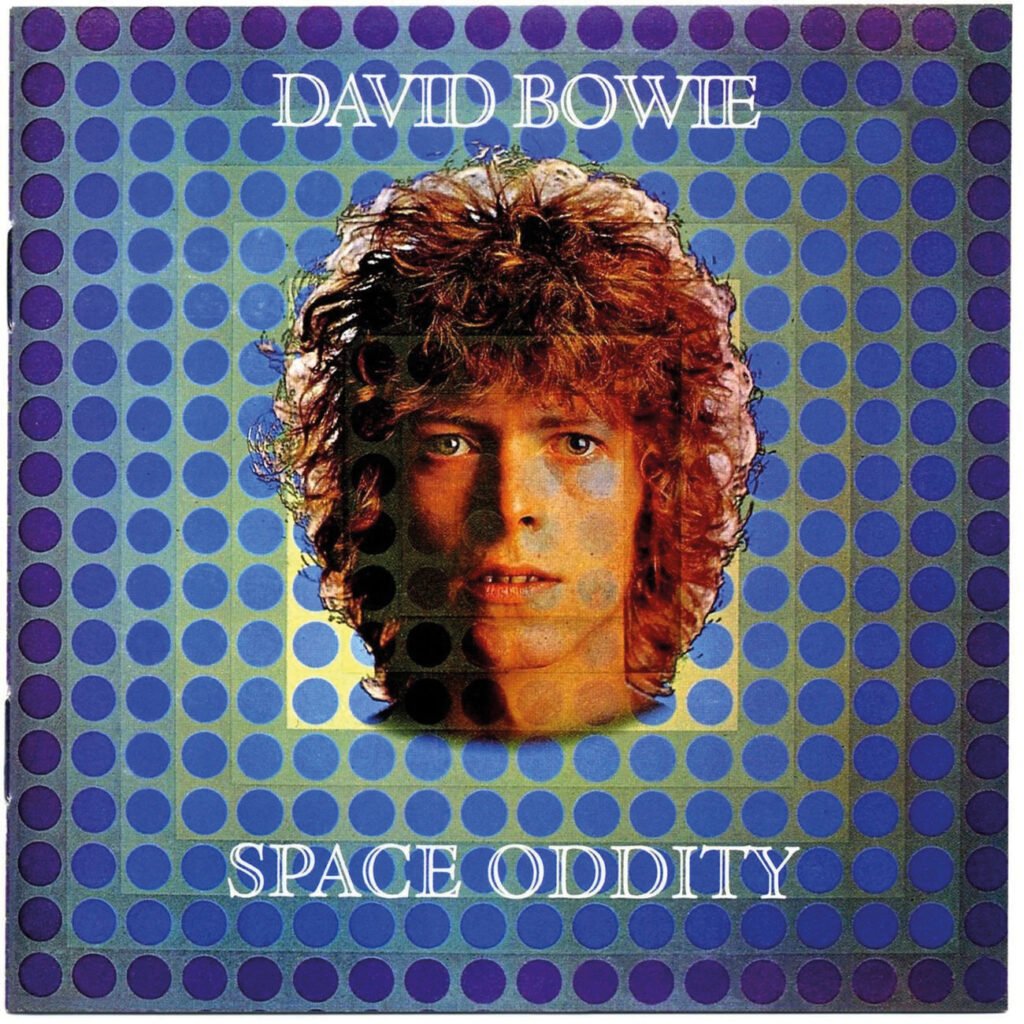
There are countless David Bowie records relating to space, but ’Space Oddity’ has to be the top choice. It was released as a single five days before Apollo 11 lifted off from the Kennedy Space Center in Florida and nine days before Neil Armstrong and Buzz Aldrin landed their lunar module, a craft that really was pretty much a “tin can”, on the surface of the moon on 21 July 1969. Bowie revived the character of Major Tom on ‘Ashes To Ashes’ in 1980, but by this point he was “Strung out on heaven’s high / Hitting an all-time low” and a man definitely not to be messed with.
THE BEATLES
‘Across The Universe’
(Apple, 1970)
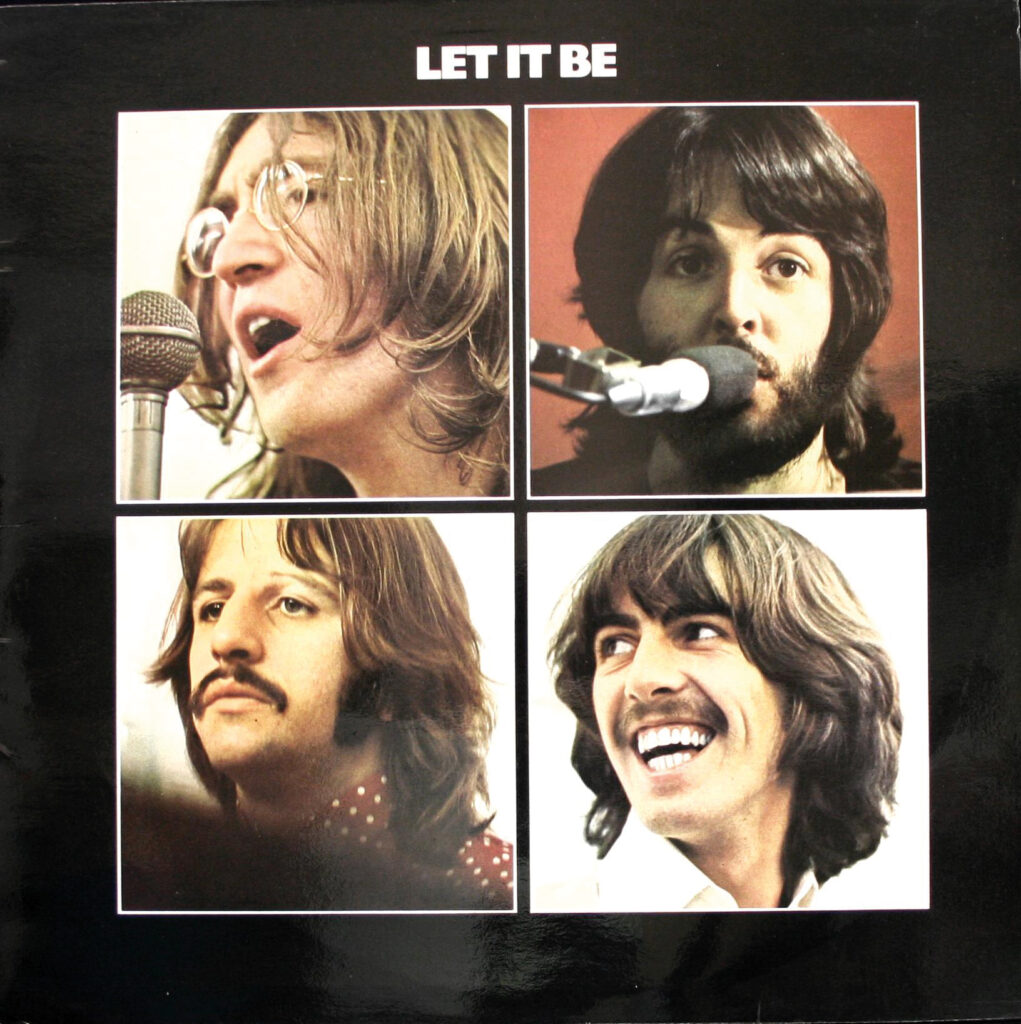
John Lennon called it “a cosmic song” and thought the lyrics were some of the best he’d ever written, although he wasn’t keen on the version that appeared on ‘Let It Be’, complete with Phil Spector’s orchestral and choral overdubs. Fast forward to 2008, NASA celebrated its 50th birthday by beaming the song towards the North Star – across the universe at a speed of 186,000 miles per second – using its Deep Space Network communications system. “Well done NASA!” said Paul McCartney in a message to the space agency. “Send my love to the aliens.”
TANGERINE DREAM
‘Alpha Centauri’
(Ohr, 1971)
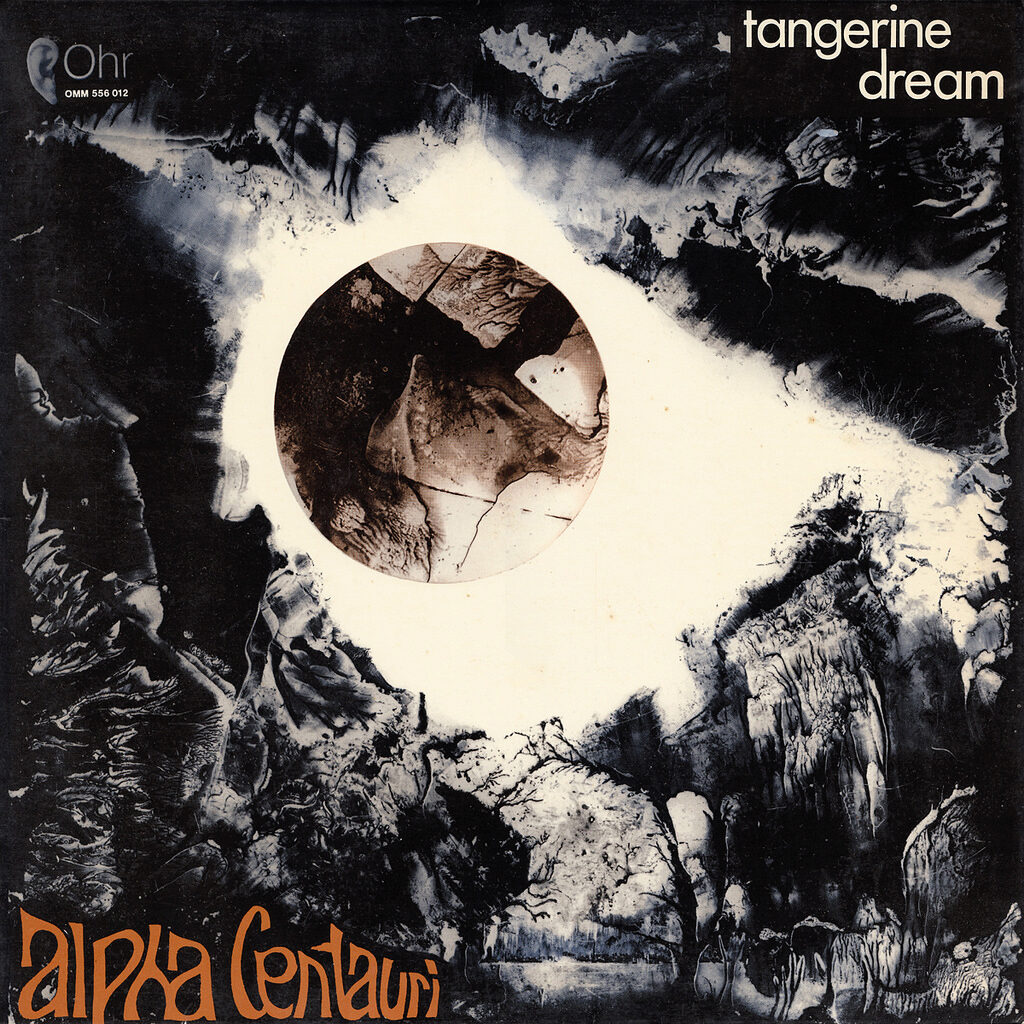
Named after the closest star system to our sun, ‘Alpha Centauri’ was Tangerine Dream’s second album and represented a significant shift away from the wild jams that filled their debut towards something closer to the band’s brighter, smoother and often highly structured classic sound. Edgar Froese called it “kosmische musik” in his sleeve notes for the original release, a phrase subsequently used to describe pretty much every record that came out of Germany for the rest of the 1970s.
HAWKWIND
‘Silver Machine’
(United Artists, 1972)
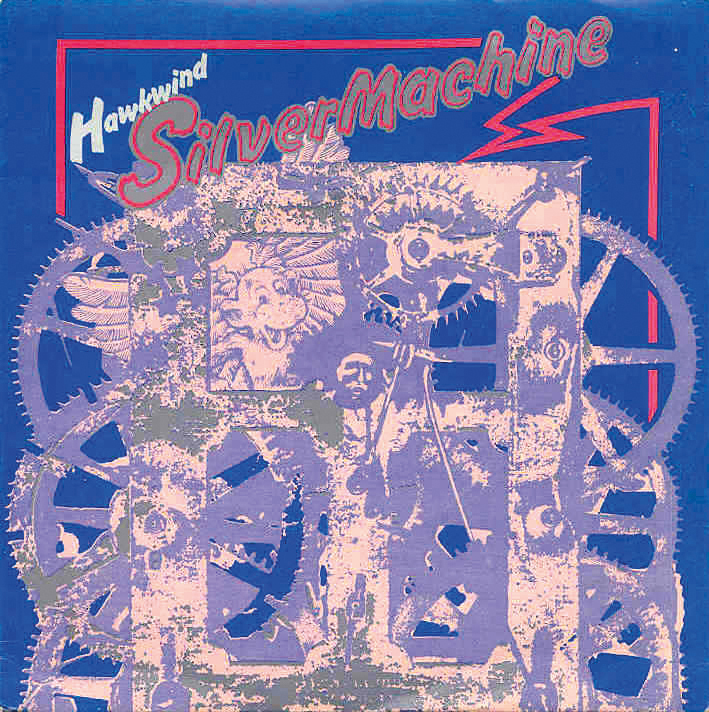
The British take on “kosmische” was generally harder and heavier – and nobody did it better than Hawkwind. ’Silver Machine’, their best-known song, was actually about a bicycle not a spaceship, but it was one that could “fly sideways through time” to “the other side of the sky”. The track is underpinned by a bed of electronic noise from beginning to end and the vocals are provided by Lemmy, who was then the band’s bass player.
SUN RA
‘Space Is The Place’
(Blue Thumb, 1973)
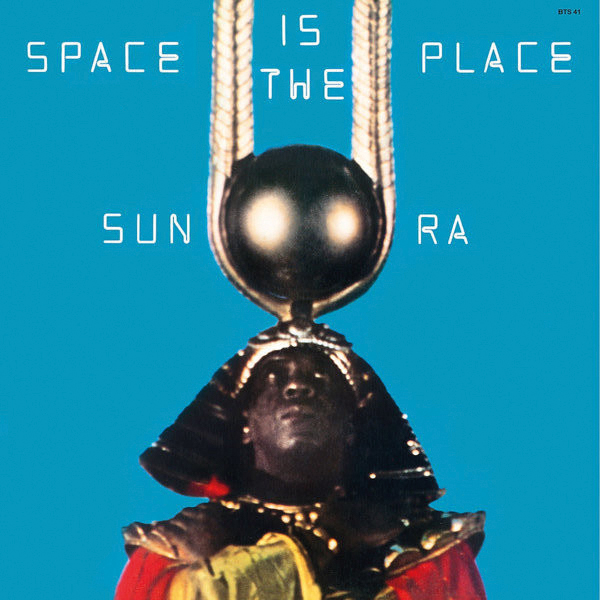
Sun Ra – free jazzer, synth lover, slight eccentric – said he came from Saturn. He stood by this claim throughout his life, which might explain why he was so interested in ideas that were not quite of this world. ‘Space Is The Place’, on which he is backed by his Astro Intergalactic Infinity Arkestra, is often described as one of Sun Ra’s most accessible albums, but don’t be fooled by that. The 21-minute title track is still a noisy and discordant celebration of top quality squonk.
PARLIAMENT
‘Mothership Connection(Star Child)’
(Casablanca, 1975)
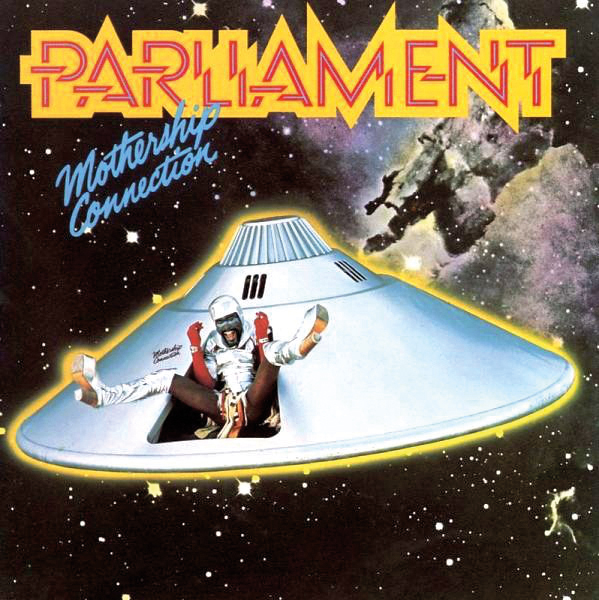
An important message to the citizens of the universe from Commander George Clinton – “Let me put my sunglasses on / So I can see what I’m doing here” – with some help from Bootsy Collins on bass and Bernie Worrell on just about every keyboard in existence. Parliament’s live show at this point, which cost around $250,000, included a massive flying saucer that zipped above the audience on wires, all flashing lights and spitting fire and belching smoke, before descending on the stage.
VANGELIS
‘Albedo 0.39’
(RCA, 1976)
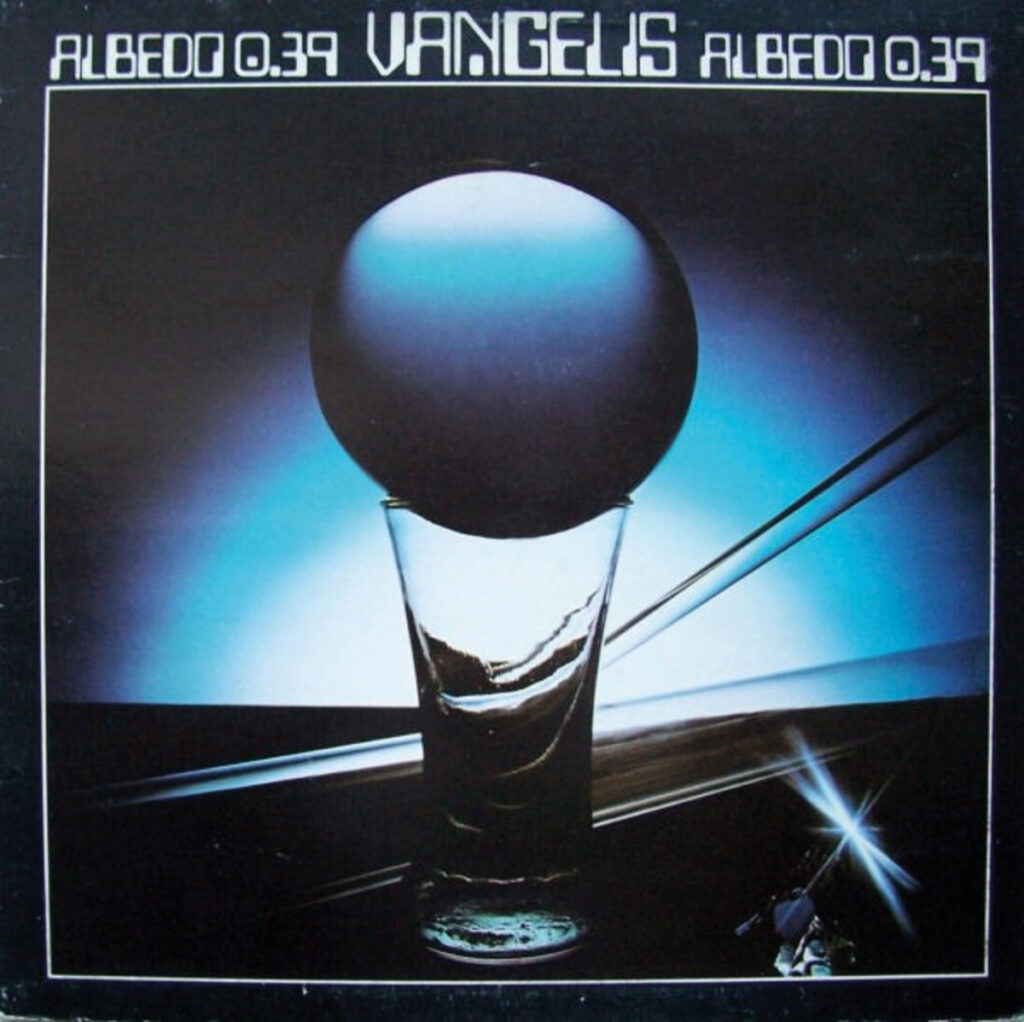
Big synth pulses, mad jazz percussion, snatches of dialogue from NASA’s moonshot transmissions and a special guest appearance by the speaking clock are all part of the mix on Vangelis’ groundbreaking concept album about space physics. The majestic ‘Pulstar’ is the killer track. The title of the album refers to the “albedo” of Earth, which is the proportion of solar radiation received by an astronomical body that is reflected back into space.
KLAATU
‘Calling Occupants Of Interplanetary Craft’
(Capitol, 1976)
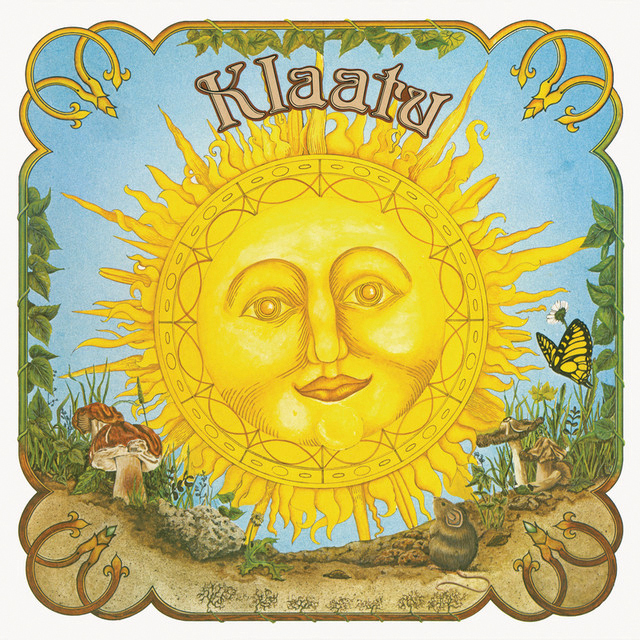
The original version of The Carpenters’ hit was written and first recorded as a more overtly symphonic track by Klaatu, a Canadian prog trio who took their name from the robot in ‘The Day The Earth Stood Still’. It was the opening cut on Klaatu’s debut album, ’3:47 EST’, and was inspired by an event in 1953 called Contact Day, organised by the International Flying Saucer Bureau, at which people were asked to send telepathic messages to any aliens lurking out in the Solar System.
SPACE
‘Magic Fly’
(Disques Vogue, 1977)
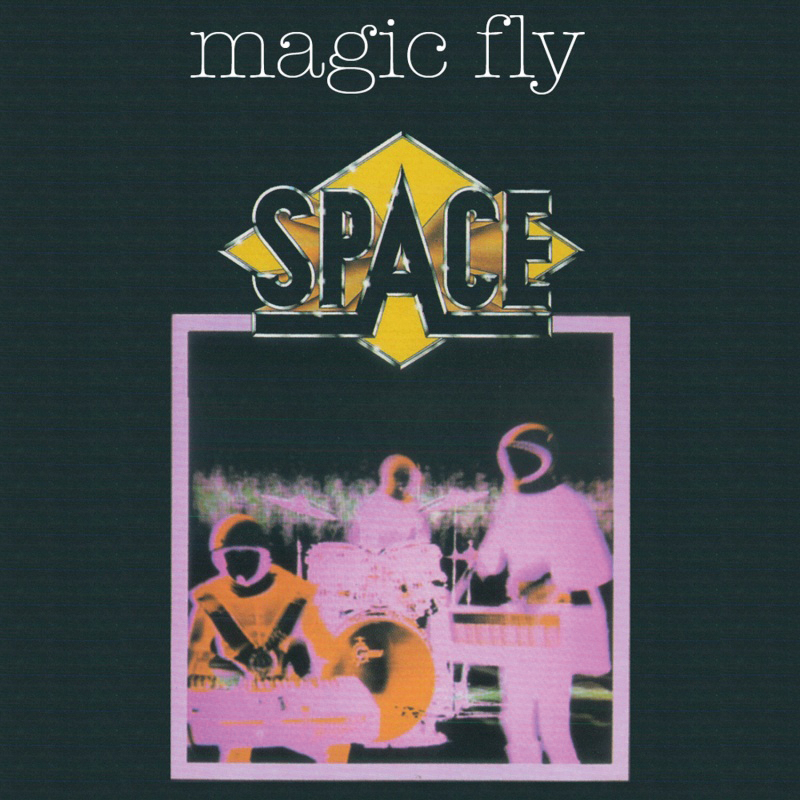
‘Don’t adjust your set,” joked Noel Edmonds when he introduced the video for Space’s’Magic Fly’ on ’Top Of The Pops’. The jazzy visual effects were certainly something else, at least by the standards of 1977, when most people had only recently upgraded their black and white TVs to colour. With its catchy melody, bouncy beat and oddball sci-fi vibes, the record itself was a notable launchpad for the cornucopia of synthy magic that was space disco.
WAR
‘Galaxy’
(MCA, 1977)
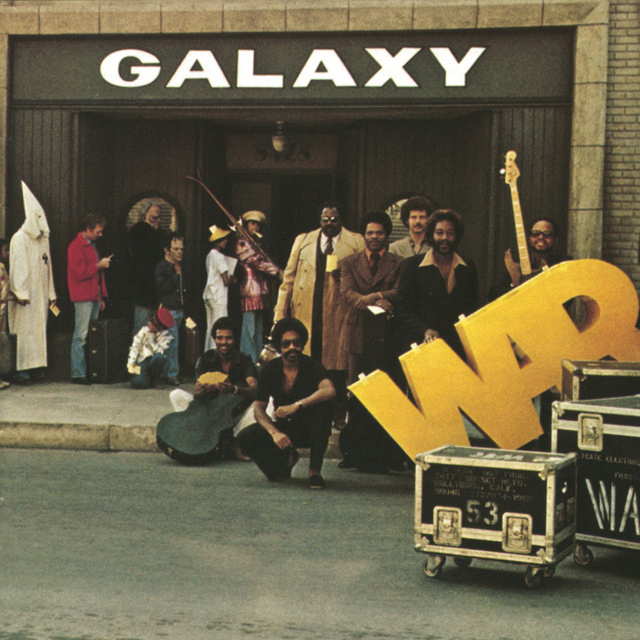
From space disco to space funk. The mighty War were one of the hottest and simultaneously coolest outfits ever (check out ‘Me And Baby Brother’ and ‘Low Rider’) and ‘Galaxy’ is an irresistible boogie beyond the outer limits. The eight-minute original is the title track of War’s 10th album, a gold record in the US, while an edited version gave the band a Top 20 hit single in the UK. As the man says, “On a rocket ship, no time to wait / I just want to gravitate”. Oh yeah.
KRAFTWERK
‘Spacelab’
(Capitol, 1978)
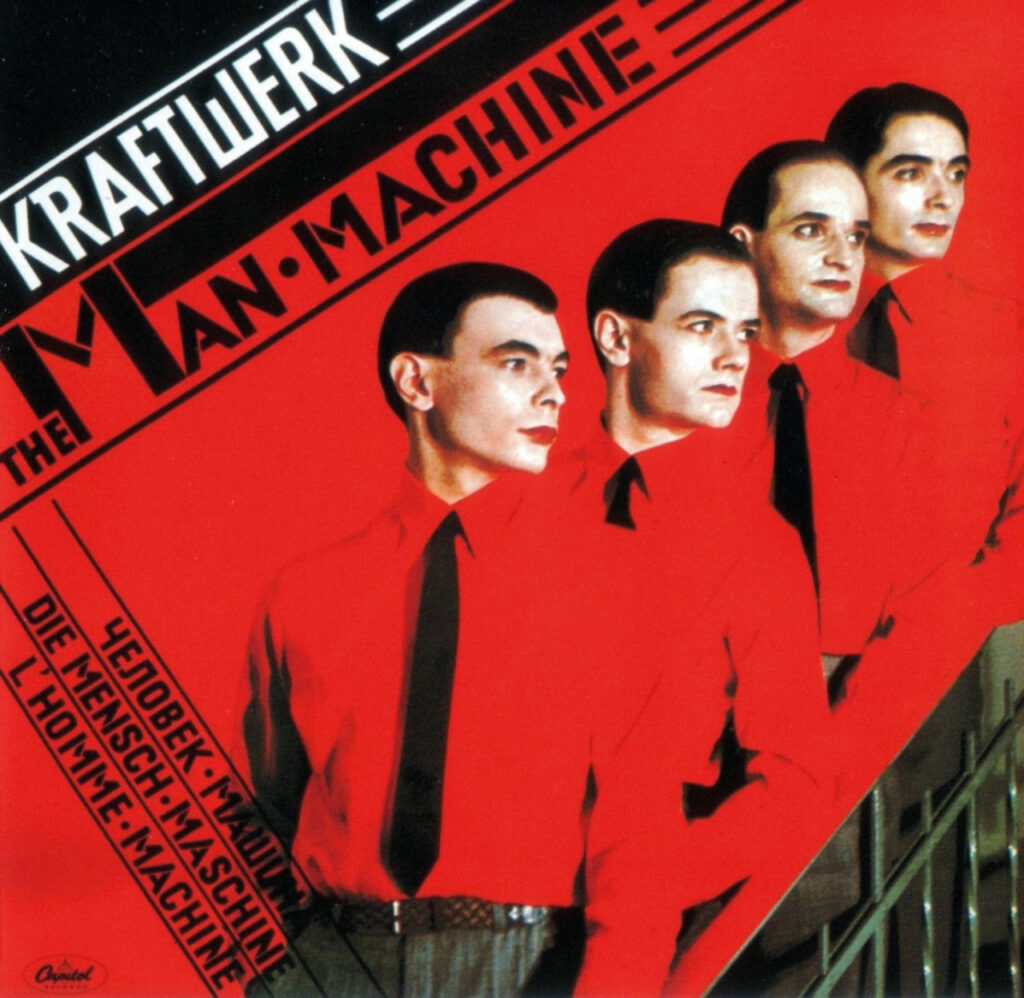
Ralf and his buddies were not as obsessed with space as many of their contemporaries, but they did come up with the mighty fine ’Spacelab’, a highlight of ‘The Man-Machine’ and a track often cited as the starting point for Italo-disco. It was inspired by Skylab, the US space station that orbited the Earth for six years between 1973 and 1979, although the last manned mission ended in early 1974. Skylab was eventually brought back into the Earth’s atmosphere, breaking up over the Indian Ocean and the outer reaches of Australia. Which neatly brings us to…
DEVO
‘Space Junk’
(Virgin, 1978)

NASA calculated there was only a very remote chance of debris from Skylab hitting a human being, but that didn’t stop the world’s newspapers speculating on the possibility. Or Devo writing ‘Space Junk’, an intergalactic go-go song on ‘Q: Are We Not Men’ about Sally, who is hit by heavy metal falling from the sky – “It smashed my baby’s head, space junk / And now my Sally’s dead, space junk”. The poor girl didn’t stand a chance.
SPIZZENERGI
‘Where’s Captain Kirk?’
(Rough Trade, 1979)
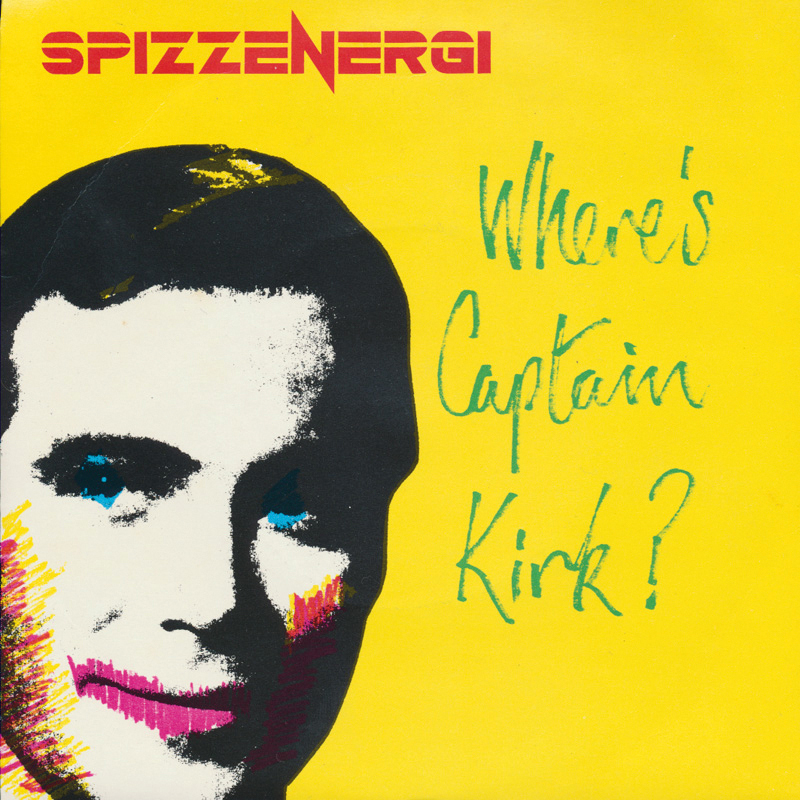
The greatest ever record about ’Star Trek’? Yup. John Peel, a big supporter of Mr Spizz’s band throughout its various incarnations (Spizzenergi, Spizzoil, Athletico Spizz 80 and more), wasn’t the only fan. ‘Where’s Captain Kirk?’, punky and poppy and quite bonkers, was the first Number One single when the official UK indie charts launched in 1980. Not bad for a song that Spizz wrote on the bus coming home from the pub one night.
THE HUMAN LEAGUE
‘The Black Hit Of Space’
(Virgin, 1980)
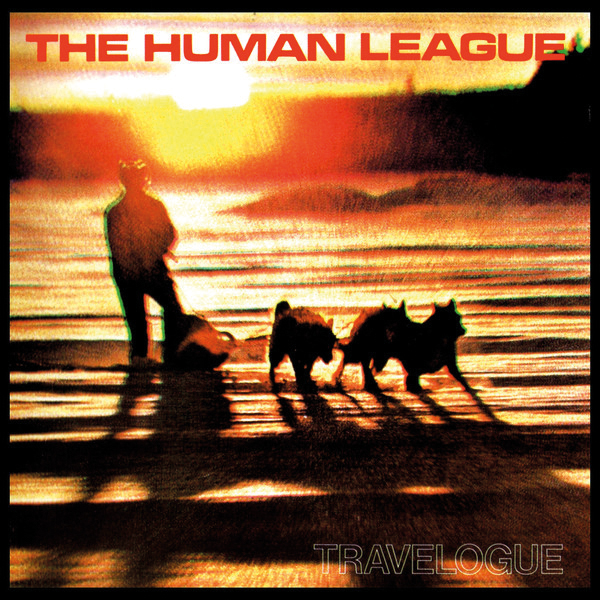
The opening track of The Human League’s ’Travelogue’ album, goodness knows what Phil Oakey was doing when he came up with the lyrics of the ’The Black Hit Of Space’. One minute he’s putting a record on the turntable and making a sandwich, the next his little black disc has swallowed the entire universe. Even James Burke, the 1970s BBC science broadcaster who gets a mention near the end, can’t seem to do anything about it. Marvellous stuff.
SCIENTIST
‘Scientist Meets The Space Invaders’
(Greensleeves, 1981)
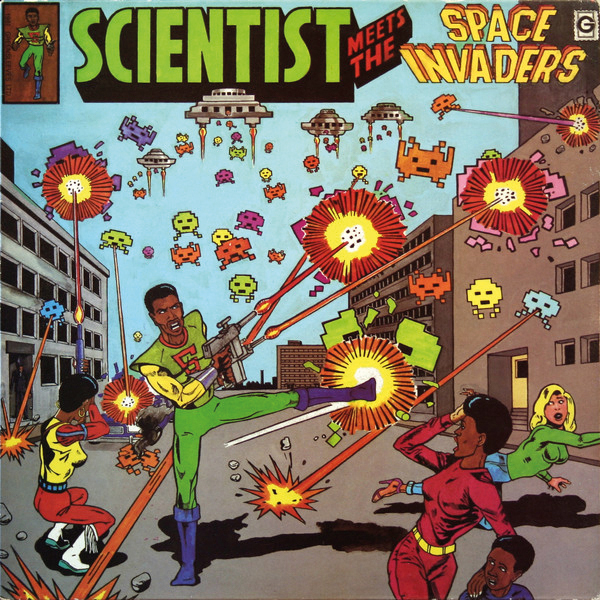
Probably the best known in a series of themed albums on which the Jamaican dub reggae master, who started out as an assistant to King Tubby, reveals both his mixing skills and his ability to turn himself into a battling cartoon hero for the record covers. Recorded at the famous Channel One Studios in Kingston, ‘Space Invaders’ strips the original songs down to their barest of bones and piles the effects so high that they end up somewhere close to Pluto.
AFRIKA BAMBAATAA & THE SOULSONIC FORCE
‘Planet Rock’
(Tommy Boy, 1982)
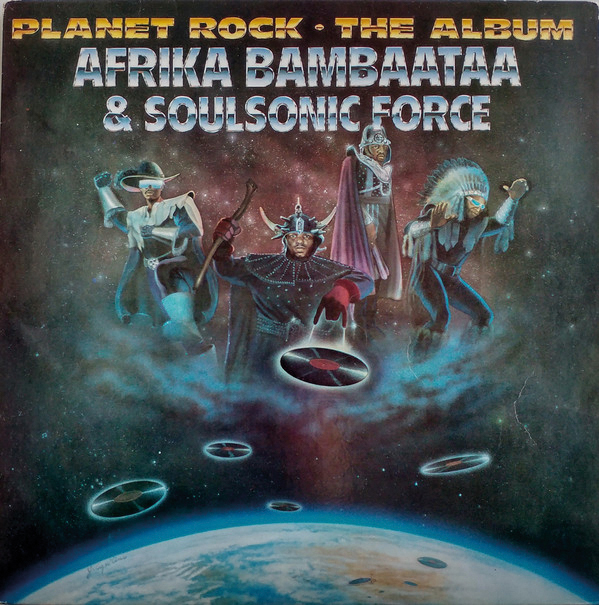
At the beginning of 1982, the Soviet space probe Venera 13 landed on Venus and made the first-ever sound recording on another planet. At pretty much exactly the same time, Afrika Bambaataa and producer Arthur Baker were at Intergalactic Studios in New York City working on something special of their own. Borrowing heavily from Kraftwerk and Yellow Magic Orchestra, the result was ‘Planet Rock’, the seminal electro track. It was named after the funkiest place in the universe too.
BRIAN ENO
‘Apollo: Atmospheres And Soundtracks’
(EG, 1983)
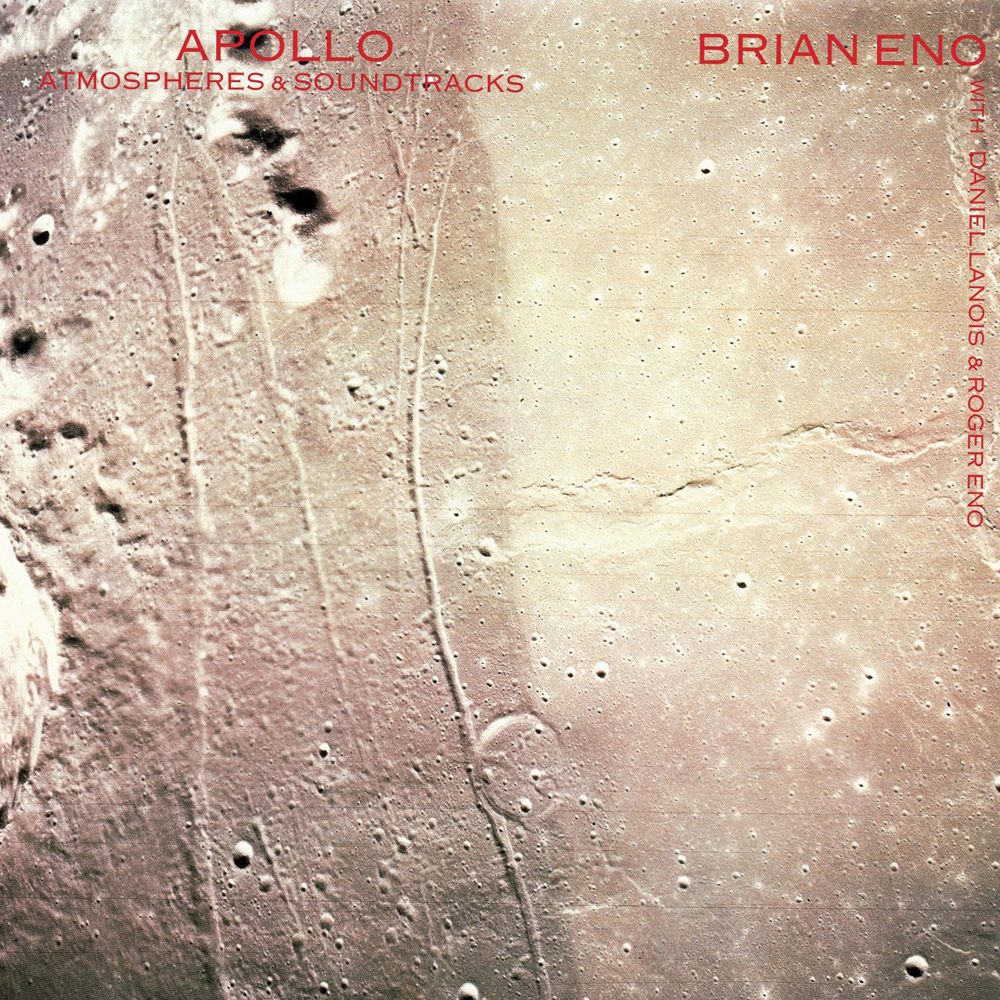
Eno originally recorded the material on ‘Apollo’ as the soundtrack for an otherwise silent documentary film made up of 35mm archive footage of NASA’s moonshot missions, most of which had never been seen before. The album is rightly considered one of Eno’s finest works, but the film was not a success. It was later reworked and reissued as ‘For All Mankind’, with astronauts such as Jim Lovell (Apollo 8 and 13) and Michael Collins (Apollo 11) narrating the footage.
MODEL 500
‘No UFOs’
(Metroplex, 1985)
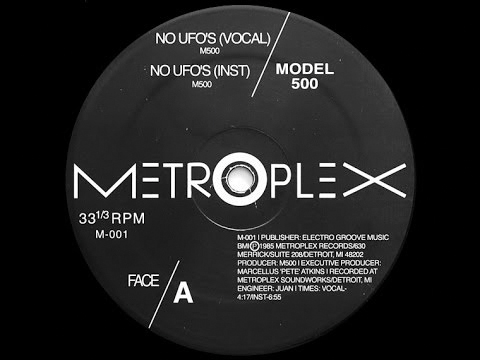
This was the first Model 500 release from Detroit techno pioneer Juan Atkins, who began his music career DJing alongside Derrick May in the early 1980s. They called themselves Deep Space, which is also the title of Model 500’s 1995 album. Atkins has often spoken of his keen interest in space travel and time travel, citing the influence of writers such as Arthur C Clarke, Isaac Asimov and Alvin Toffler, as well as films and TV shows like ‘Star Wars’, ’Star Trek’ and ‘Lost In Space’.
THE RAH BAND
‘Clouds Across The Moon’
(RCA, 1985)
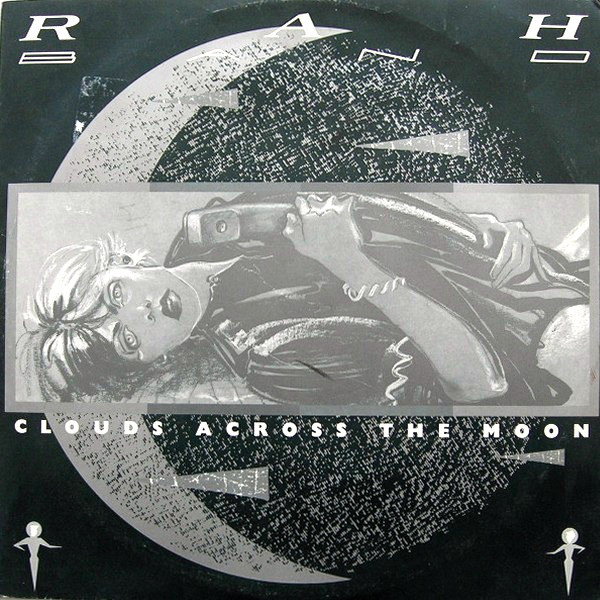
Richard Anthony Hewson is the only constant member of The RAH Band, who are notble for their 1977 debut, the unforgettable ’The Crunch’, and this smooth and smart synthpop song. With Hewson’s wife Liz supplying the breathy vocals, ’Clouds Across The Moon’ is the sad tale of a young lady’s annual telephone call to her lover, a flight commander stationed on Mars who she hasn’t seen for 50 years. Not so sad for Mr and Mrs Hewson, though, because the record ended up in the UK Top 10.
NEWCLEUS
‘Space Is The Place’
(Sunnyview, 1985)
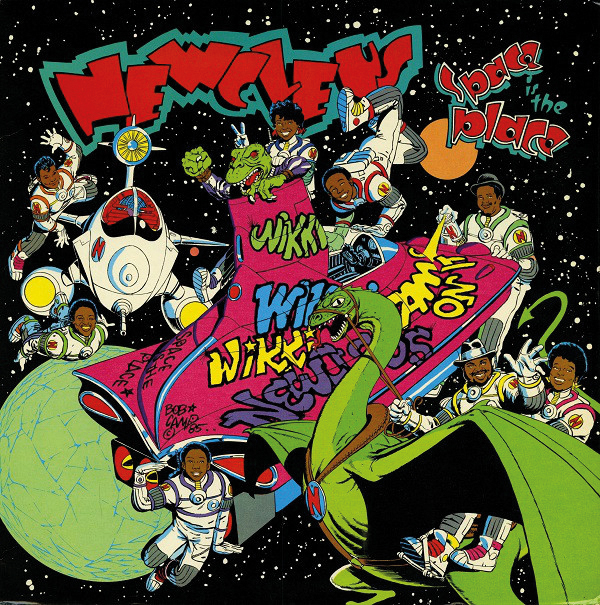
Nothing to do with the Sun Ra album, this ‘Space Is The Place’ is the title track of the second and final studio set from Newcleus, one of New York’s first and finest electro crews. It had the same cartoonish sensibility as their ’Jam On Revenge’ debut, which most people called ‘The Wikki-Wikki Song’, but the vocoder vocals and tougher rhythms made it a lot more interesting.
JEAN-MICHEL JARRE
‘Dernier Rendez-Vous: Ron’s Piece’
(Polydor, 1986)
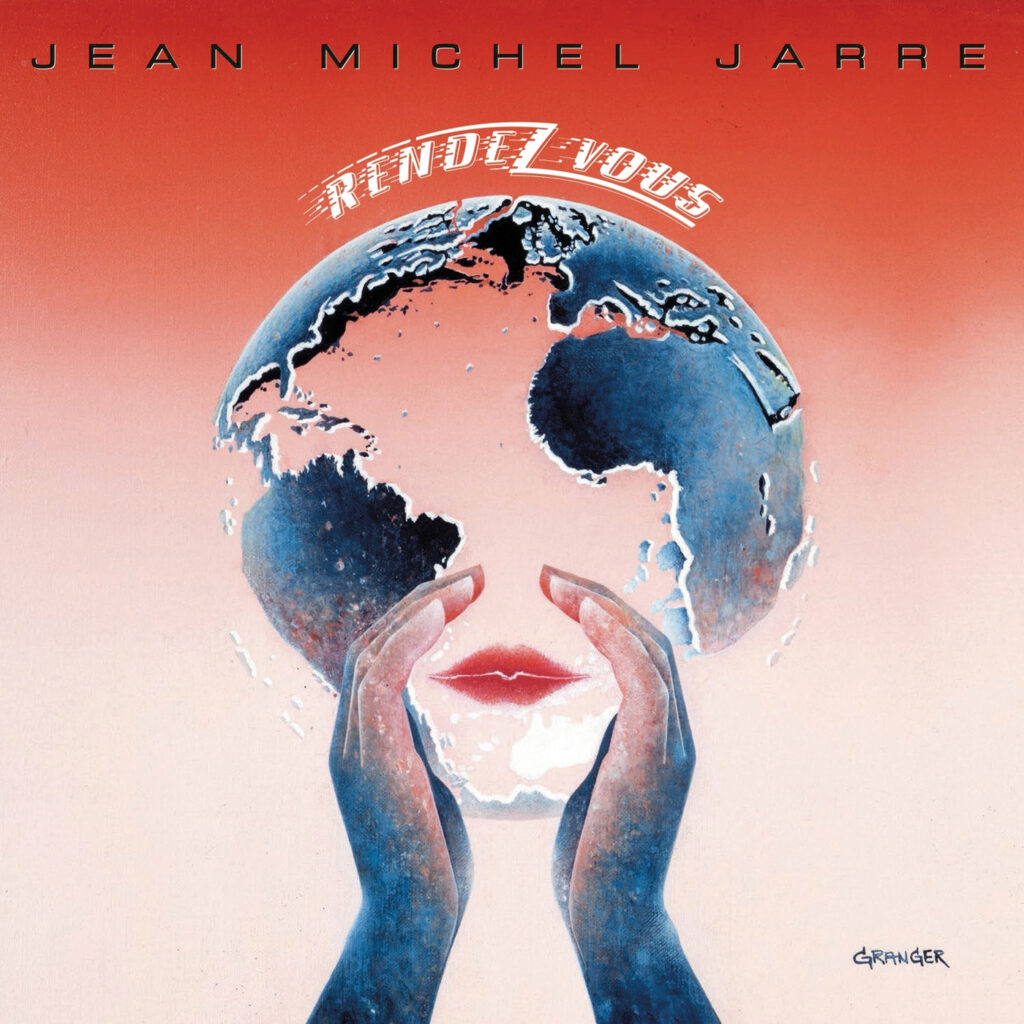
Jean-Michel Jarre worked closely with astronaut and accomplished saxophonist Ron McNair on the composition of this, the final track on Jarre’s ‘Rendez-Vous’ album. The plan was for McNair to record his sax part on board the Challenger space shuttle, but the Challenger disintegrated just 73 seconds after lift-off in January 1986, killing all seven crew members. Jarre gave the track the sub-title ‘Ron’s Piece’ when the record was released later in the year.
AR KANE
‘A Love From Outer Space’
(One Little Indian, 1989)
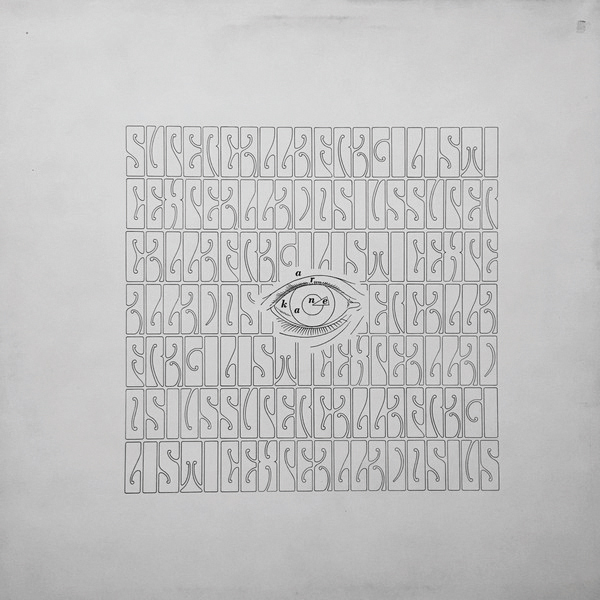
‘A Love From Outer Space’ kicks off ‘i’, AR Kane’s sound-shifting second album, which came out just as the Voyager 2 space probe approached Neptune, having already previously encountered Jupiter, Saturn and Uranus. A devilishly funky and decidedly cosmic dreampop song, ‘A Love From Outer Space’ was a radical departure from the feedback rush of AR Kane’s ’69’ debut, but let’s not forget that Alex Ayuli and Rudy Tambala had been part of the M/A/R/R/S team a couple of years earlier.
RENEGADE SOUNDWAVE
‘Space Gladiator’
(Mute, 1989)
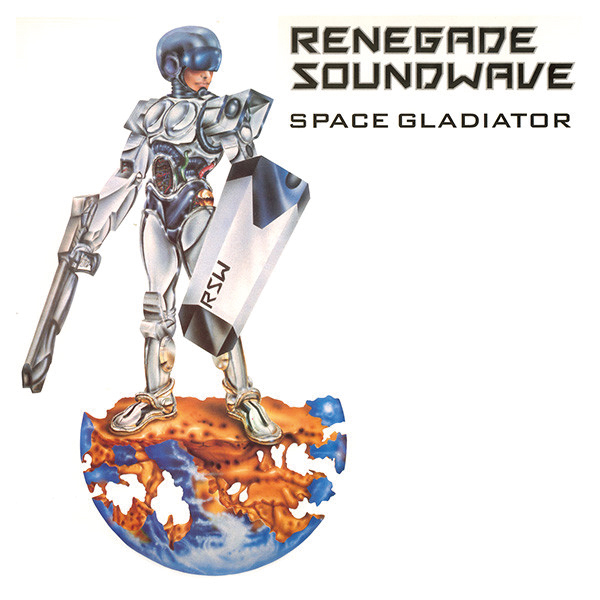
RSW always knew how to work up a sense of jeopardy, as evidenced by early cuts like ‘Kray Twins’ and ‘Biting My Nails’. With ’Space Gladiator’, they raised the stakes higher still, smoothing the joints between their electro-industrial-dub sound and moving into a new lyrical dimension with tales of “Space invaders, space gladiators, bandits in the sky”. Thumbs up for the B-side of the single too, the booming and clattering ‘The Phantom’.
THE GRID
‘One Giant Step’
(East West, 1990)
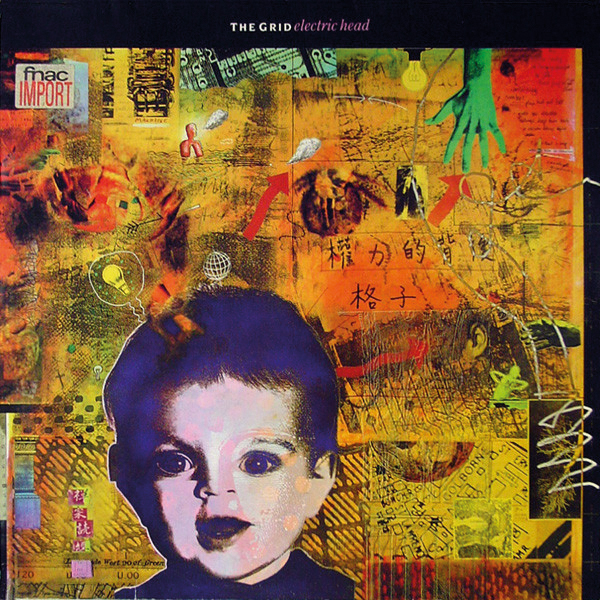
Richard Norris and Dave Ball kicked off The Grid’s ‘Electric Head’ debut album with ‘One Giant Step’, a celestial techno track that stitches together dialogue samples from several different NASA missions. Most notable is John Glenn, the first American to orbit the Earth, describing what he sees through the window of the Friendship 7 capsule in February 1962: “I am in a big mass of some very small particles that are brilliantly lit up like they’re luminescent. I never saw anything like it. They’re coming by the capsule and they look like little stars.”
SPACE
‘Space’
(KLF Communications, 1990)
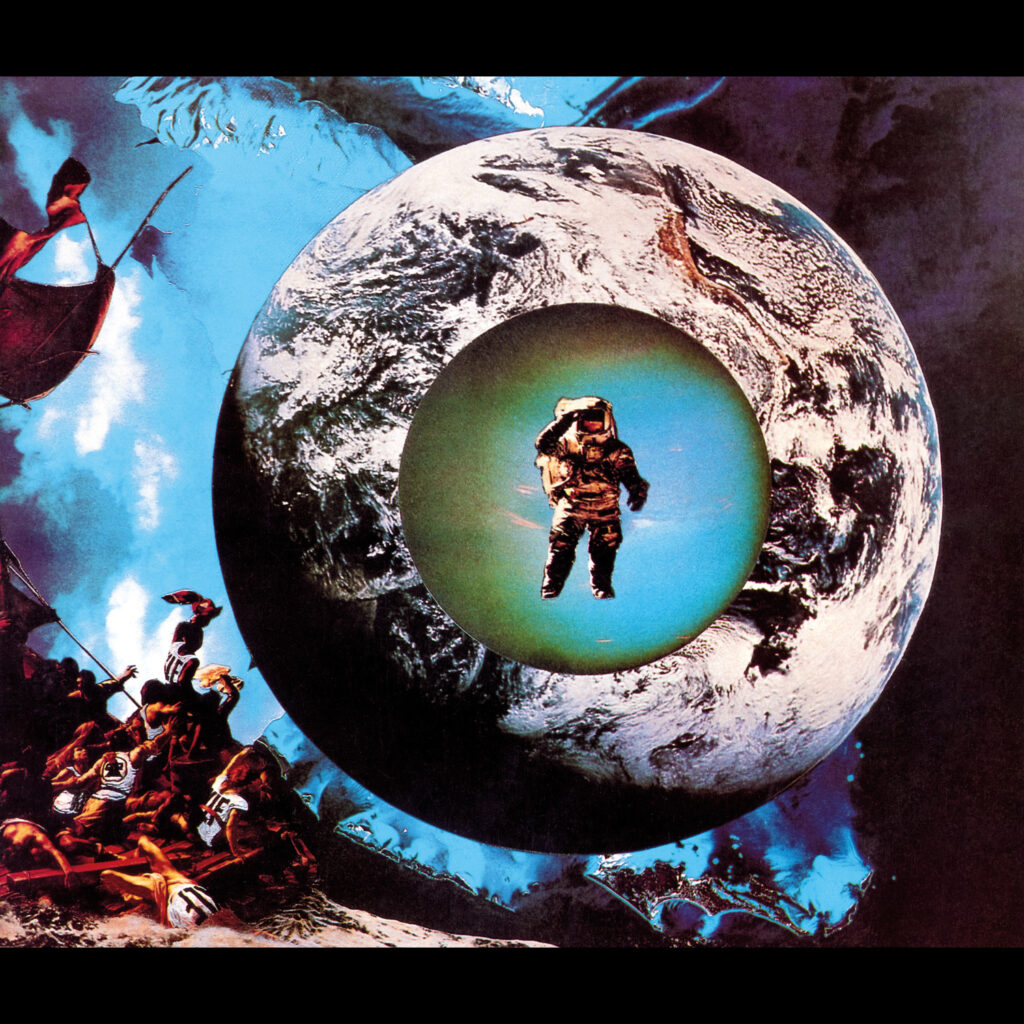
Not to be confused with the ‘Magic Fly’ guys, this was a one-off release by Jimmy Cauty of The KLF fame. It was originally intended as the debut album by The Orb, the group Cauty had formed with Alex Paterson in 1988, but Cauty kept the tapes when the pair parted company and used them as the basis for ‘Space’. The result is an ambient house classic which starts with the sound of a rocket taking off, ends with a splashdown, and makes superb use of ‘Twinkle, Twinkle, Little Star’ during the round-the-planets trip.
THE ORB
‘Adventures Beyond The Ultraworld’
(Big Life, 1991)
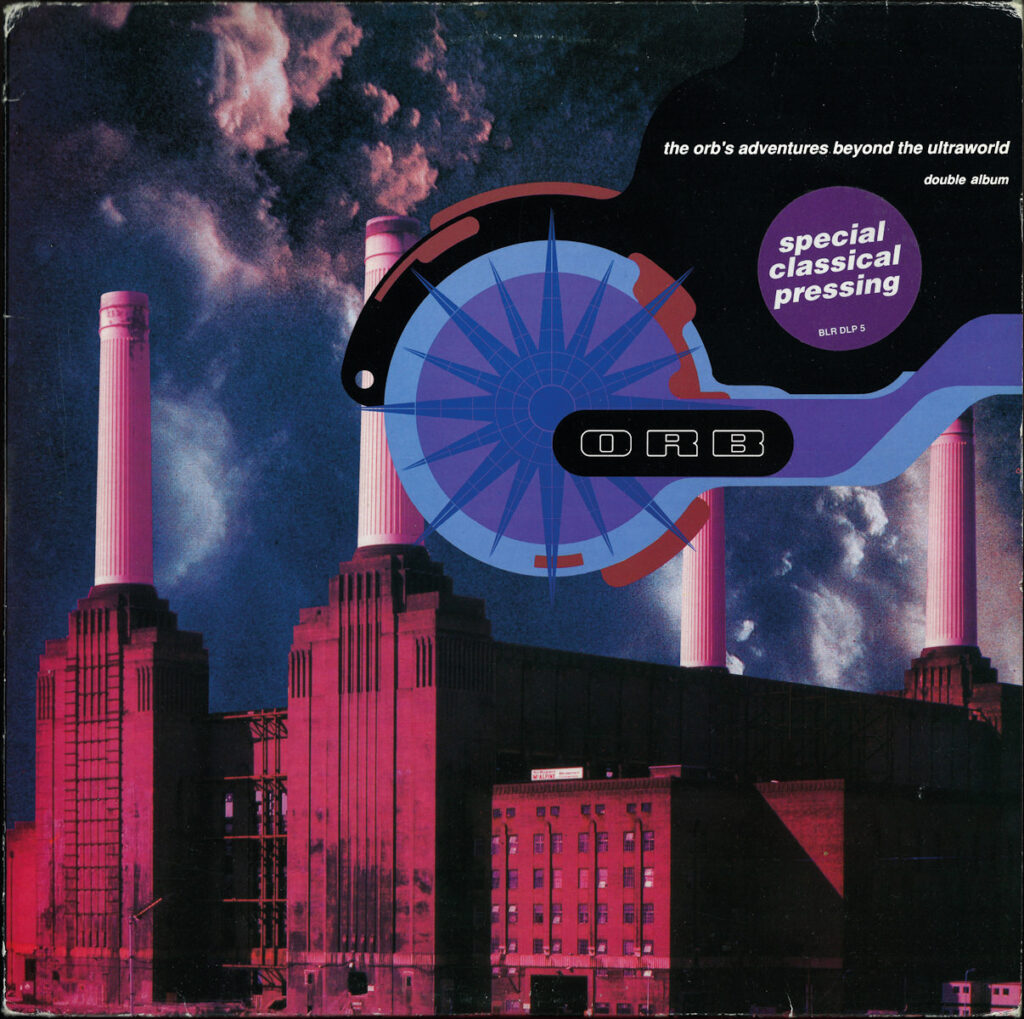
Alex Paterson’s split from Jimmy Cauty didn’t exactly throw him off course. If anything, it propelled him further and faster. By the time he released ‘Adventures Beyond The Ultraworld’, The Orb’s first album, Paterson had dubbed and sampled himself into a different dimension entirely, the space themes explored here reflected in track titles such as ‘Back Side Of The Moon’, ‘Star 6 & 7 8 9’ and ’Supernova At The End Of The Universe’. More than 25 years on, this is still truly out-of-this-world music.
BIOSPHERE
‘Microgravity’
(Apollo, 1991)
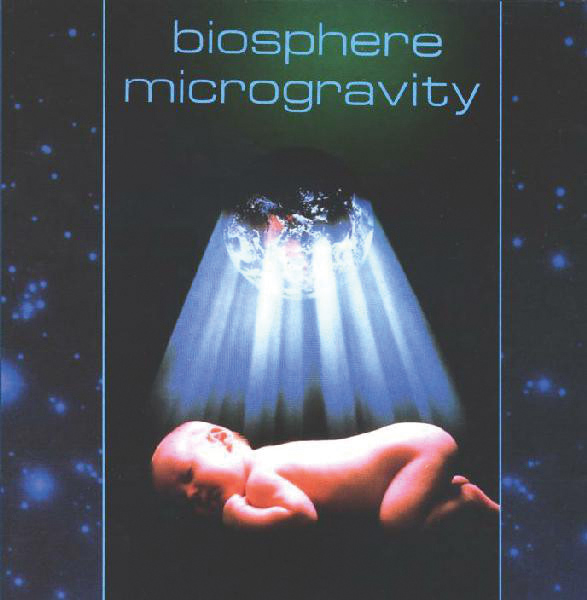
Biosphere is Geir Jenssen, a Norwegian musician from Tromsø, a city some 200 miles north of the Arctic Circle. Jenssen recorded ‘Microgravity’ shortly after leaving Bel Canto, transitioning from dreampop to techno and exploring his long-time interest in astronomy on tracks such as ‘Chromosphere’, which is named after one of the layers of the Sun, and ‘Cygnus A’, named after a radio galaxy some 730 million light years from Earth.
THE PRODIGY
‘Out Of Space’
(XL, 1992)
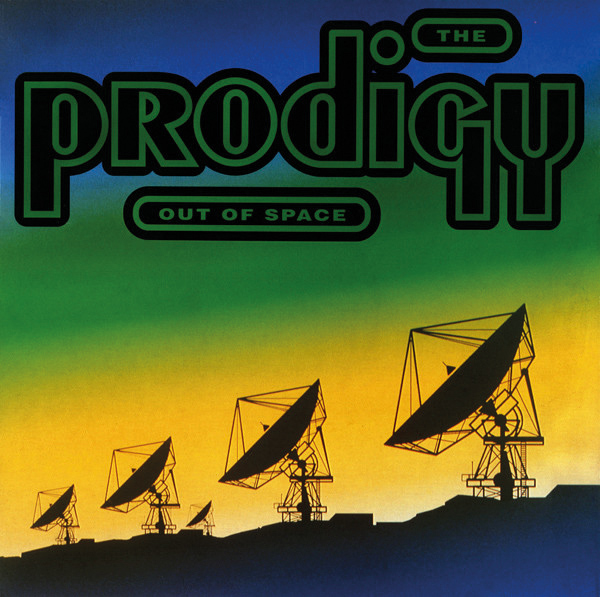
The standout track on The Prodigy’s debut album, ’Experience’, and an early hit for Liam Howlett and his crew when it was released as a single. The main vocal sample – “I’m gonna send him to outer space / To find another race” – is a straight lift from Max Romeo’s ’Chase The Devil’, a reggae classic and one of the legendary Lee “Scratch” Perry’s very finest 1970s productions.
LUSTMORD
‘The Place Where The Black Stars Hang’
(Side Effects, 1994)
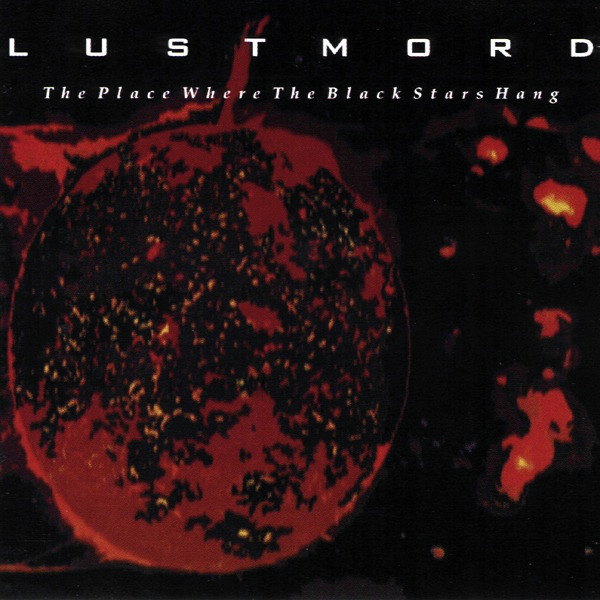
Brian Williams started working as Lustmord in 1980 and has made some fascinating records in the years since then, including collaborations with Chris & Cosey and former Tangerine Dreamer Paul Haslinger. ‘The Place Where The Black Stars Hang’, a bold attempt to translate the vast emptiness of deep space into a musical composition, has been described as the first dark ambient album. And even if it’s not the first, it’s certainly one of the very best.
ROBERT LEINER
’To Places You’ve Never Been’
(Apollo, 1994)
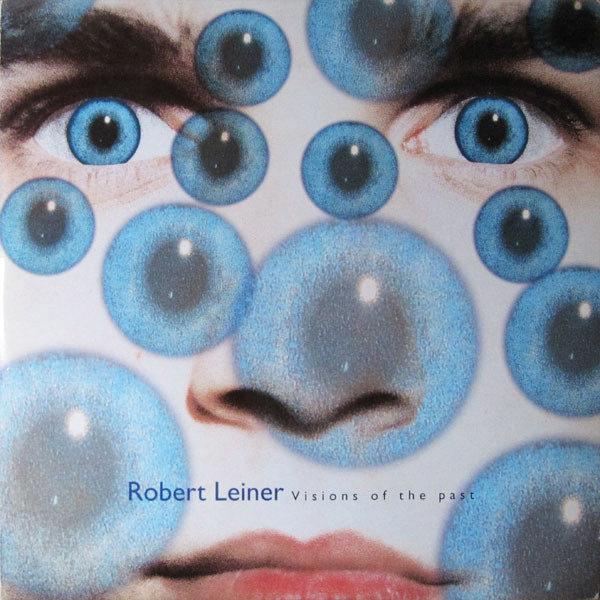
‘To Places You’ve Never Been’, from Swedish producer Robert Leiner’s awesome ‘Visions Of The Past’ album, is a truly gorgeous electronic trip that really is like no other. “From the far horizons of the unknown come transcribed tales of new dimensions in time and space”, runs the sample at the start of the album, which is taken from the introduction to the 1950s American sci-fi radio drama series ‘X Minus One’. “These are stories of the future, adventures in which you’ll live in a million could-be years on a thousand may-be worlds”. You bet.
SPIRITUALIZED
‘Ladies And Gentlemen We Are Floating In Space’
(Dedicated, 1997)
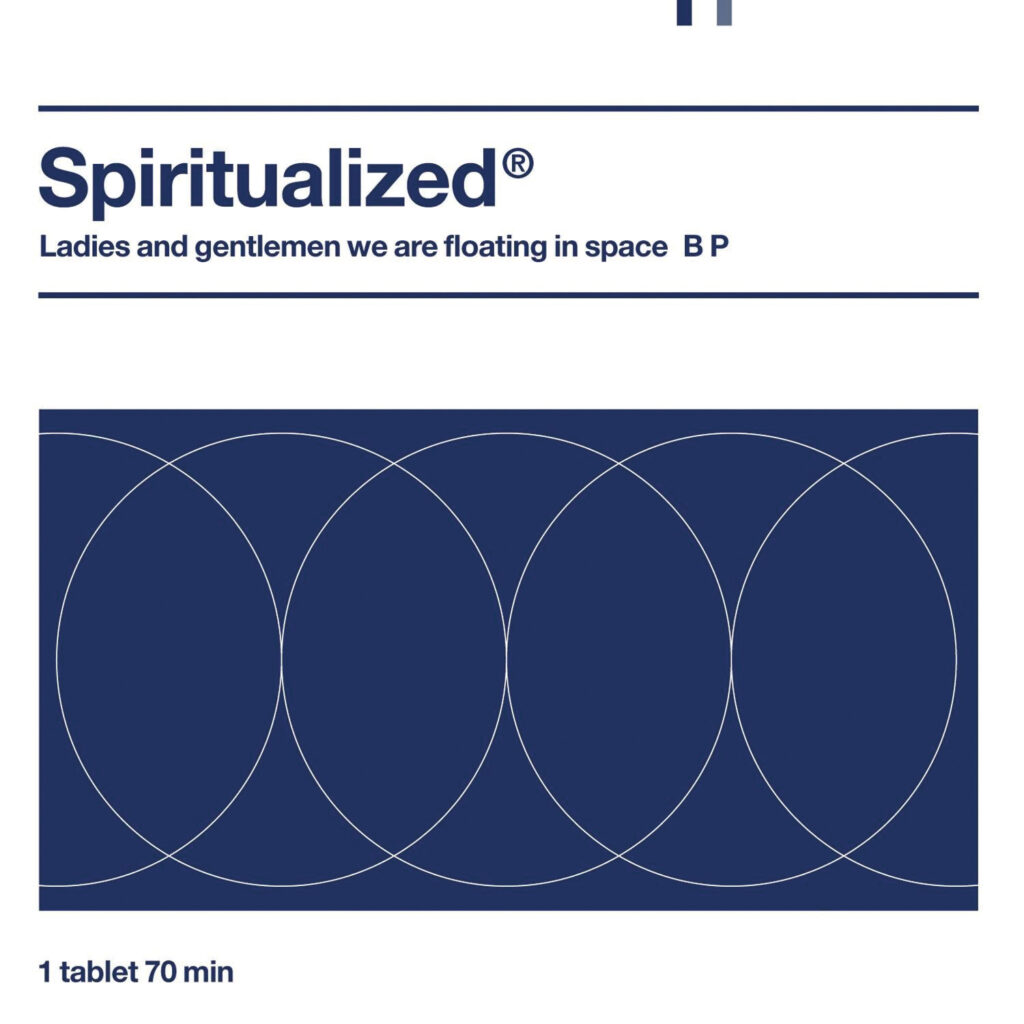
The title track of Spiritualized’s third studio album, ‘We Are Floating In Space’ is a work of symphonic wonder by Jason Pierce, formerly of Spacemen 3, with a little bit of help from the writers of Elvis Presley’s ‘Can’t Help Falling In Love With You’. One listen and you have absolutely no chance of coming back. “This is what the heavens sound like,” declared Stephen Dalton in his review for Uncut at the time.
BEASTIE BOYS
‘Intergalactic’
(Capitol, 1998)
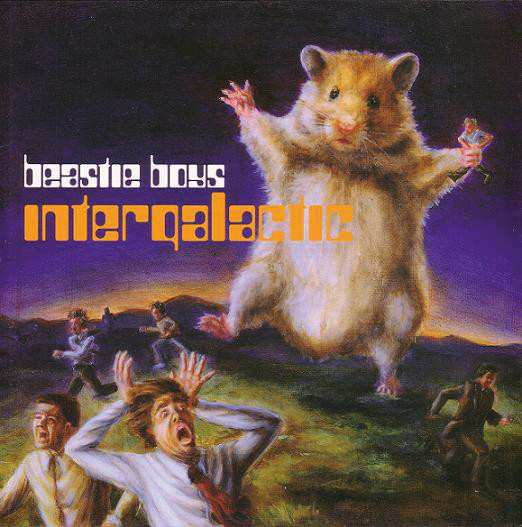
‘Intergalatic’ is the Beasties in both full-on silly-arse mode – “Comin’ from Uranus to check my style” – and full-on sizzling electro mode. The single was accompanied by a very entertaining video shot in Japan that helped to secure the band their biggest hit in the UK, reaching Number Five in the charts. Top marks to the guys for rhyming “DJ Ad-Rock” with “Mr Spock” too.
THE FLAMING LIPS
‘Approaching Pavonis Mons By Balloon (Utopia Planitia)’
(Warner Brothers, 2002)
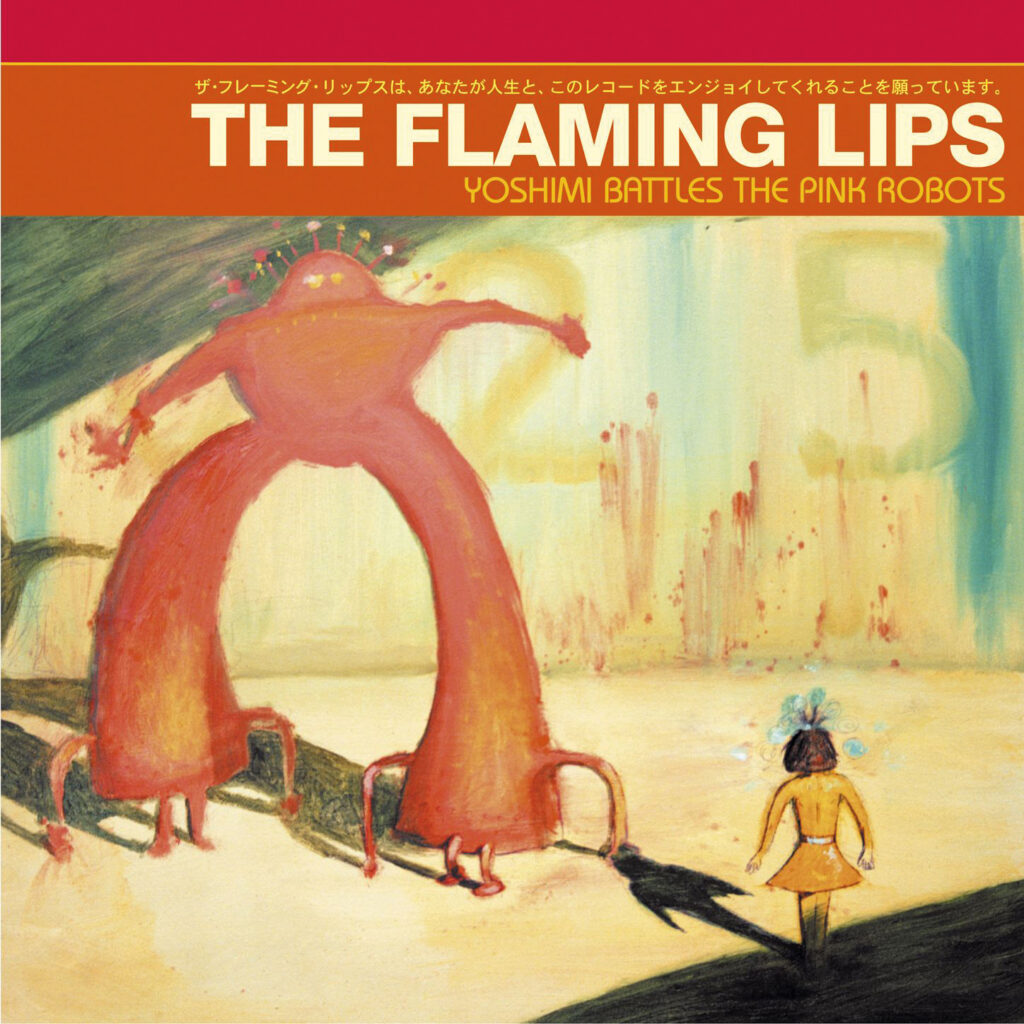
Pavonis Mons, aka Peacock Mountain, is the fourth tallest mountain on Mars, standing almost 47,000 feet high. Mount Everest, by comparison, is a mere 29,000 feet. And while approaching it by balloon might be dangerous, The Flaming Lips are always up for a challenge. The lush dreamscape closes the band’s ‘Yoshimi Battles The Pink Robots’ studio set and won them one of those little gold gramophone trophies for Best Rock Instrumental Performance at the 2003 Grammy Awards.
SLIPPER
‘Sheep’
(Mechanism, 2002)
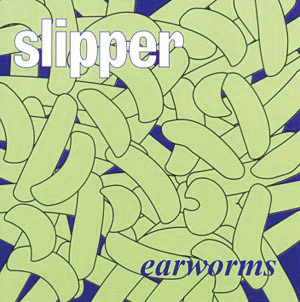
Slipper were a short-lived electronics-meets-jazzcore outfit featuring Salman Gita from Loop Guru and Rat Scabies from The Damned. They were signed to Aphex Twin’s Rephlex label for a while. ‘Sheep, a track on their ‘Earworms’ album, isn’t a very spacey title, but it features a song-long sample of the crew of Apollo 8 reciting the first 10 verses of the Book of Genesis as they orbited the moon on Christmas Eve in 1968. It’s also bloody nuts and bloody great.
JEFF MILLS
‘One Man Spaceship’
(Axis, 2006)
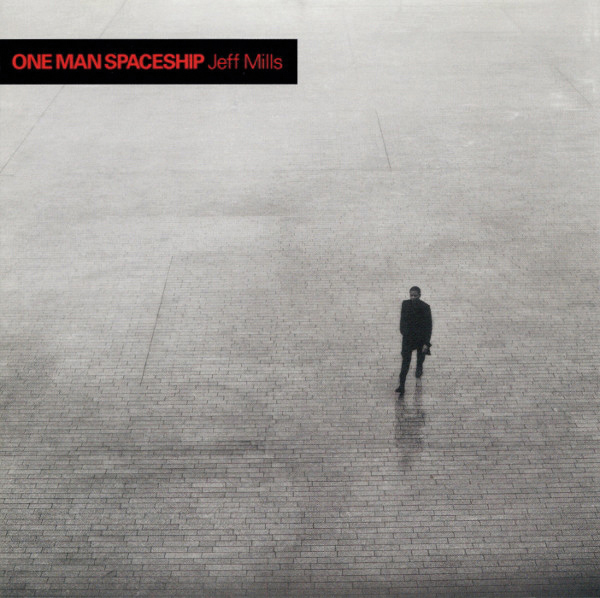
One of the most consistently innovative Detroit techno artists, former Underground Resistance man Jeff Mills has recorded countless space-themed records over the last 25 years. His interest in the subject led to NASA recruiting him to host a series of radio shows exploring the intricacies of the cosmos earlier in 2018. ‘One Man Spaceship’, featuring cuts like ‘Into The Cosmos’ and ‘Above Waiting Worlds’, is a typically cinematic work, with Mills gliding from ambient to experimental electro to minimal techno with ease.
THE SPACE LOUNGE SYNDICATE
‘Live From The Omega Station 2017’
(Crypticon Media Cartel, 2007)

This mighty fine trip hop album is so far out there, it sounds like it’s from 10 years in the future. Which, seeing as how it came out in 2007 but was supposedly recorded on a space station in 2017 to celebrate the formation of the Universal Space Regulations Consortium (nope, no idea), is probably about right. Check out The Space Lounge Syndicate’s ‘Futuristic Downtempo Trip Hop’ video on YouTube too, although that’s mainly 22 minutes of still photos of a dog.
JACK DANGERS
‘Music For Planetarium’
(Brainwashed, 2008)
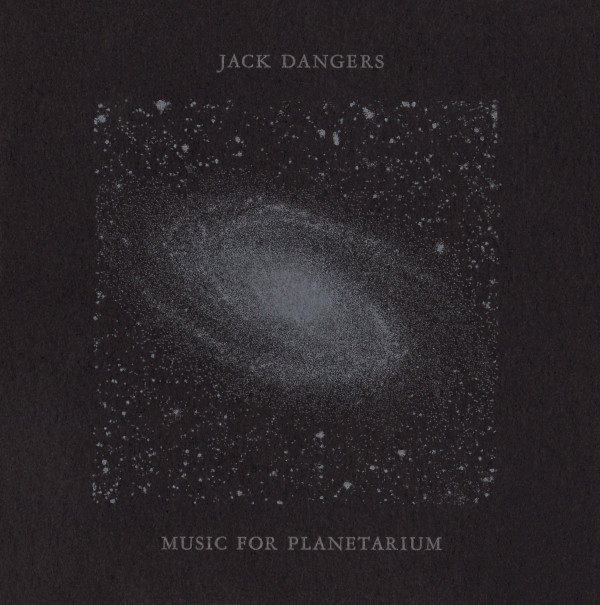
Meat Beat Manifesto skipper Jack Dangers originally composed this drone-heavy material for the Planetarium in Budapest. Released under his own name, something Dangers has rarely done in his 30-year career, each piece takes its title from a real astronomical feature, including the constellation of Orion, a starburst called Minkowski’s Object, the Pinwheel and Whirlpool Galaxies (both spiral galaxies), and the Lindsay-Shapley Ring (a ring galaxy known to its mates as AM 0644-741).
CLINT MANSELL
‘Moon’
(Black, 2009)
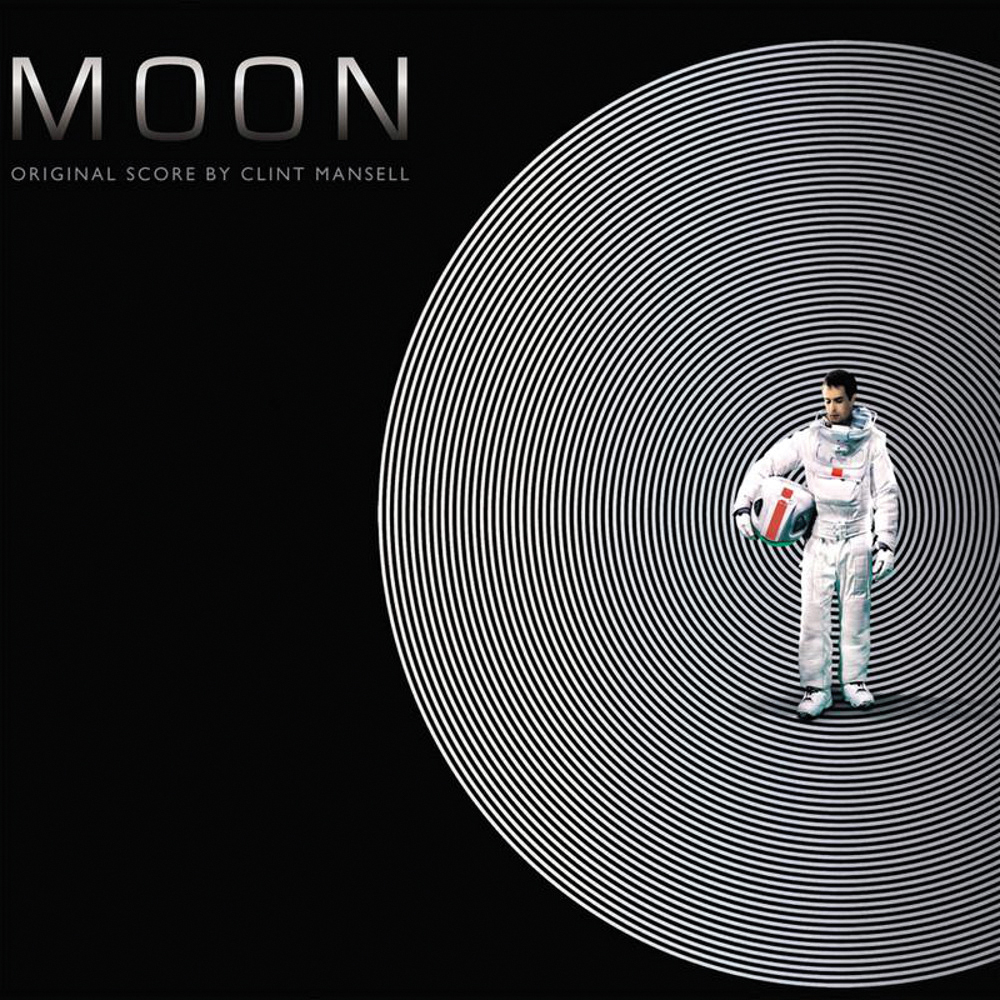
The soundtrack to Duncan Jones’ award-winning movie of the same name, ‘Moon’ is a terrific amalgam of subtle strings and minimal electronics from one-time Pop Will Eat Itself vocalist Clint Mansell. There’s also a heavy dose of krautrockery in ‘Welcome To Lunar Industries’, a variation of the movie’s main theme, which opens the album and is then revived as the closer. Eerie, emotional and highly compelling, much like the film itself.
WILLIAM SHATNER
‘Seeking Major Tom’
(Cleopatra, 2011)

Most famous as Captain Kirk, William Shatner has also released several albums over the years, starting with the very bizarre ’The Transformed Man’ in 1968. ‘Seeking Major Tom’, his fourth studio set, features 20 space-related covers, with Shatner reciting the lyrics to the likes of Bowie’s ’Space Oddity’, Elton John’s ‘Rocket Man’ and Steve Miller’s ‘Space Cowboy’ in his overly dramatic and totally unique way. Alan Parsons, Steve Hillage, Patrick Moraz and even Sheryl Crow are among the many guest musicians.
AIR
‘La Voyage Dans La Lune’
(Virgin, 2012)
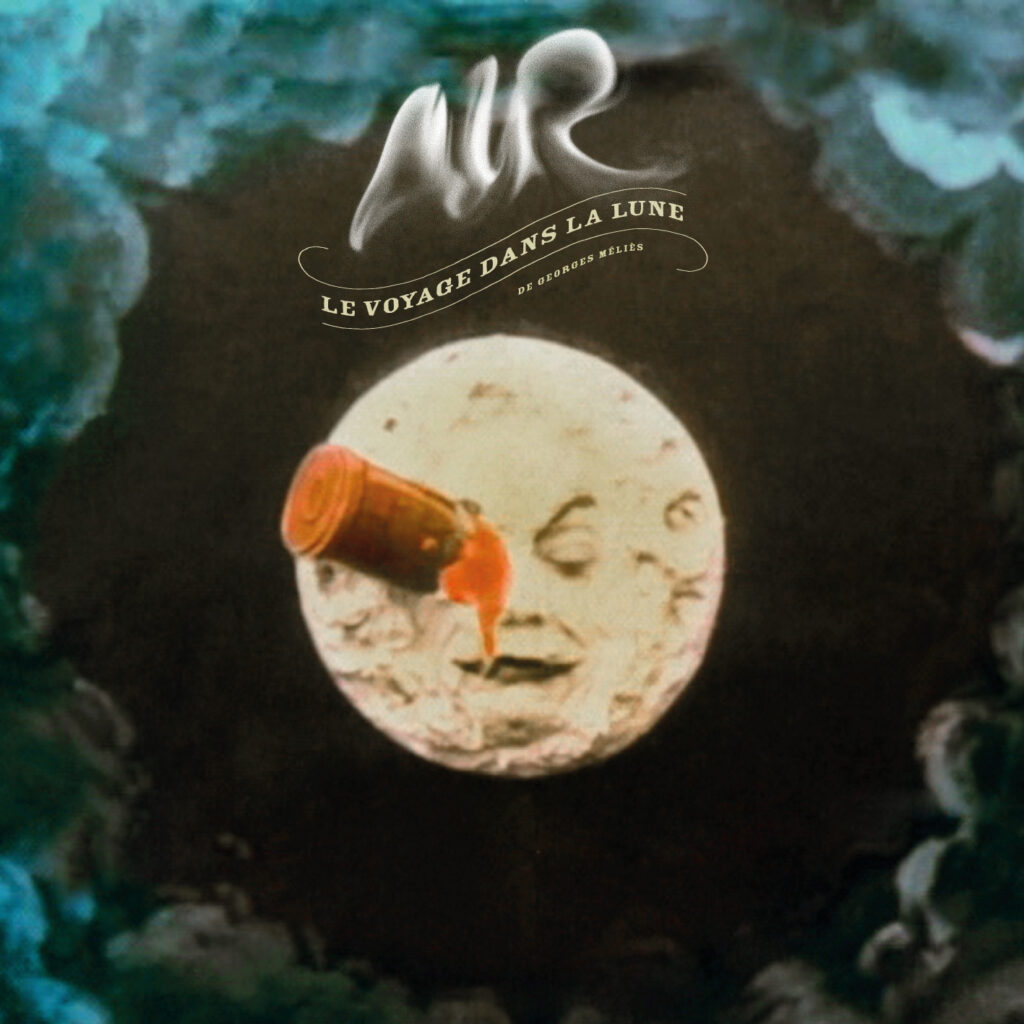
Air’s interest in space was clear from the mellow electronica of their 1998 debut album, the much applauded ‘Moon Safari’, but the more experimental ambient explorations of ’La Voyage Dans La Lune’ is something else. The French duo wrote this as the soundtrack to a restored version of the silent sci-fi movie of the same title, which was made by pioneering film director Georges Méliès in 1902 and inspired by Jules Verne’s 19th century lunar tales.
SETI
‘Final Trajectory’
(Power & Steel, 2014)
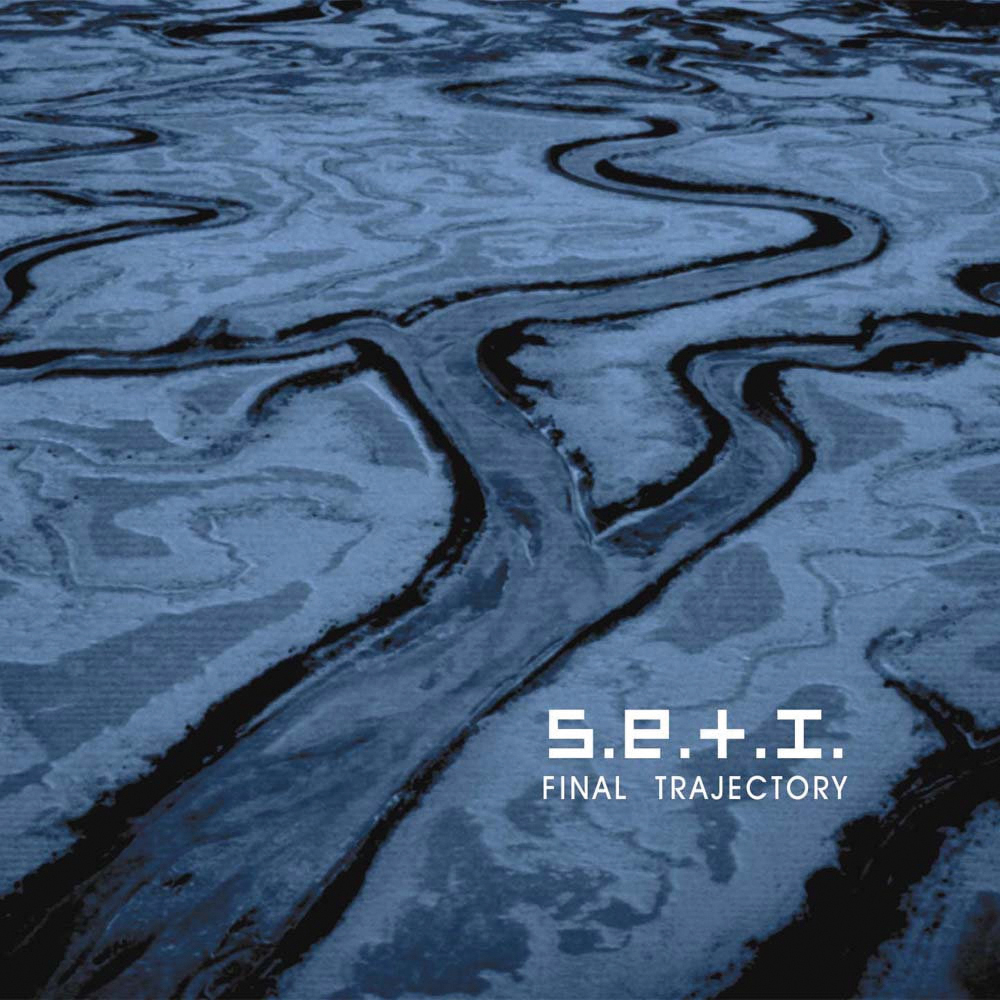
A seamless single piece of music lasting almost an hour, ’Final Trajectory’ is the work of long-time ambient experimentalist Andrew Lagowski. There are melodic chimes, creaking noises, heavily treated tones – all-enveloping and ever-expanding – and sudden bursts of static. There’s even what might be garbled alien chatter, which seems appropriate since the name SETI comes from a real-life international body called Search for Extra-Terrestrial Intelligence. If NASA released this album and announced it was the sound of deep space, nobody would dispute it.
PUBLIC SERVICE BROADCASTING
‘The Race For Space’
(Test Card, 2015)
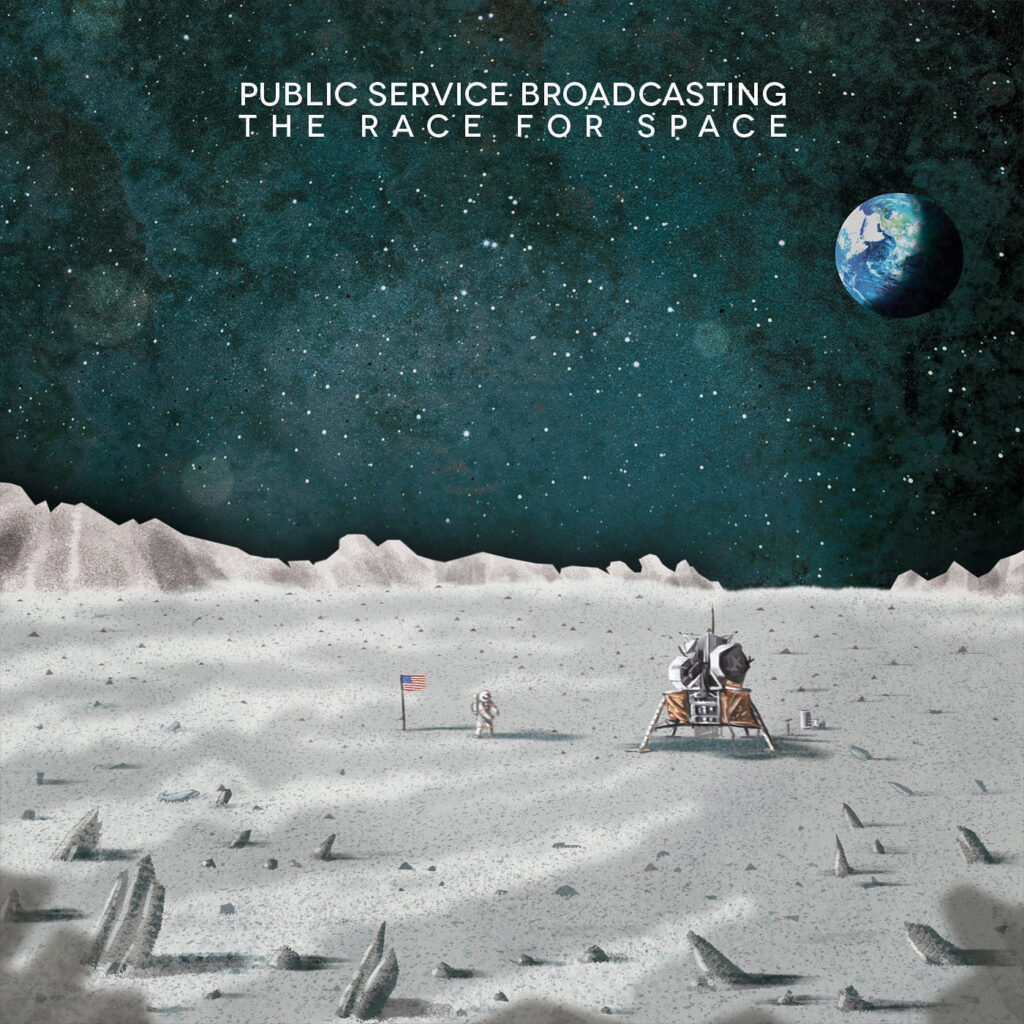
PSB’s second album uses a vast array of samples to tell the story of the US-Soviet Space Race, with each track inspired by a historical event, including the launch of the Sputnik 1 satellite in 1957, the first spacewalk (made by cosmonaut Alexey Leonov in 1965), the first moonshot (Apollo 8 in 1968) and the final Apollo mission (Apollo 17 in 1972). The band launched the album, their most rounded work to date, with two gigs at the UK’s National Space Centre in Leicester.
REED & CAROLINE
‘Hello Science’
(Very, 2018)
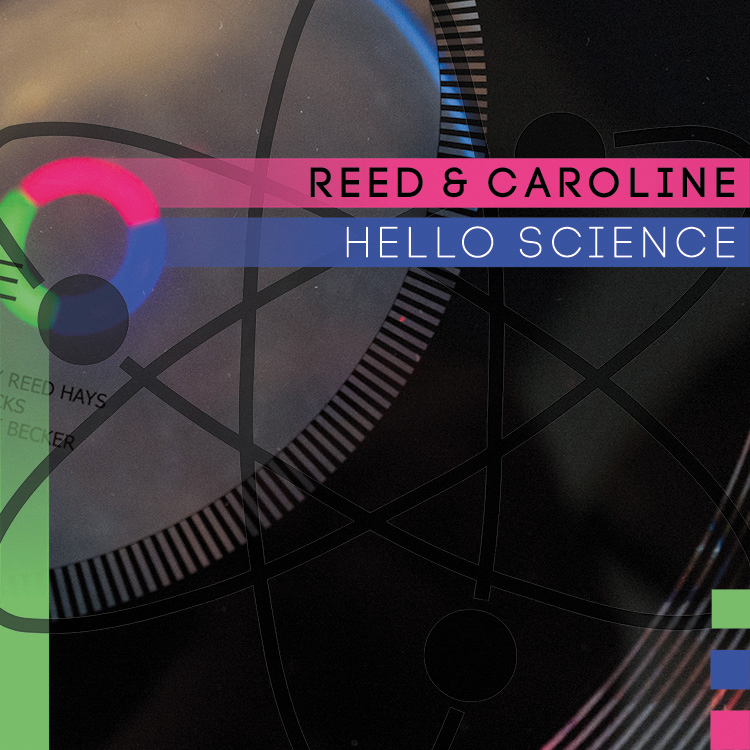
Pretty much everything on Reed & Caroline’s ‘Hello Science’ album is about the ebb and flow of the cosmos, from the minute shifts to the colossal movements. What’s more, it’s about the ebb and flow of the cosmos in a way that’s poppy, witty and totally charming. As Caroline Schutz sweetly sings on ‘Before’, the opening track, “All that we are and all that we adore / Is re-arranged from things that came before”. And on the subject of things being re-arranged…
ORBITAL
‘There Will Come A Time’
(ACP, 2018)
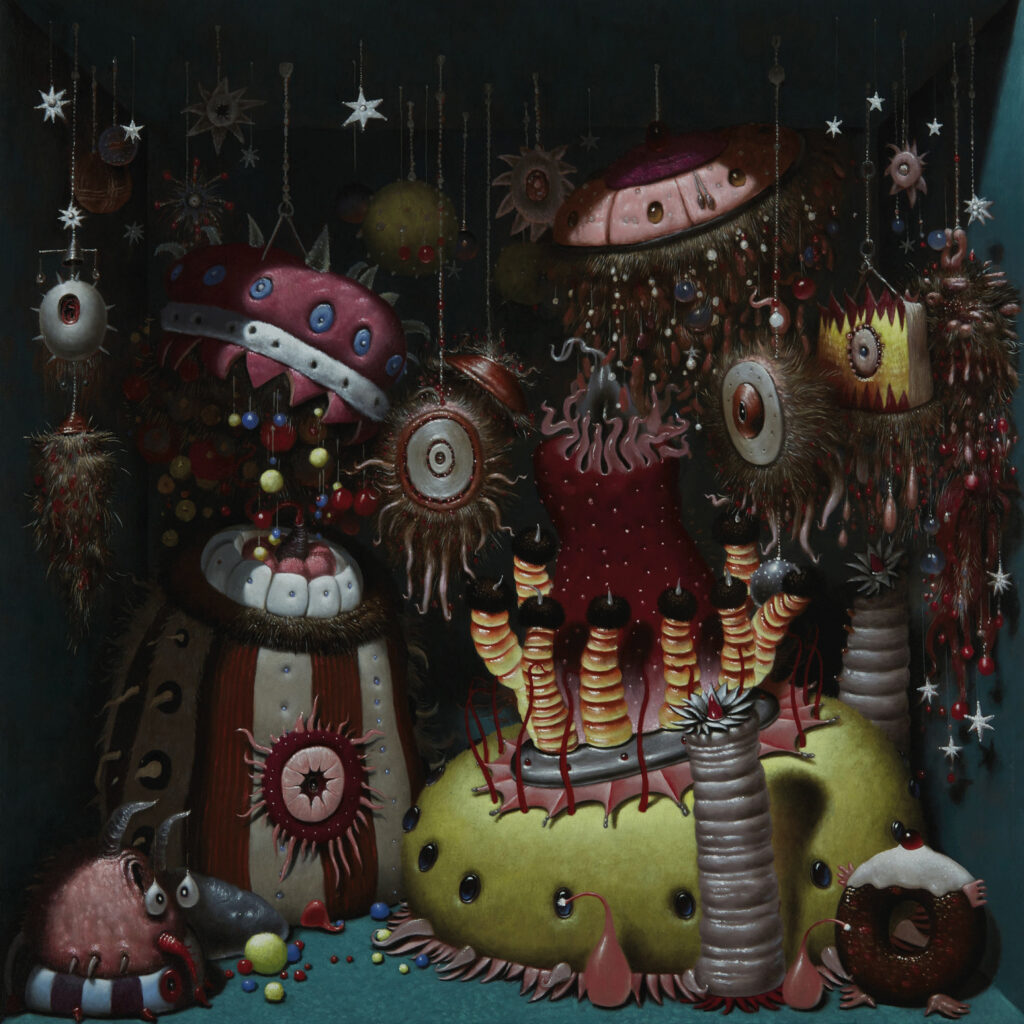
The final track on ‘Monsters Exist’, the new Orbital album, ‘There Will Come A Time’ features the voice of Brian Cox and is a great way to end this list. As Professor Cox says: “In five billion years, our sun will cease to shine. Our planet will die in the searing heat, engulfed by the dying star. The atoms once known as you will be ejected out into space. They may become parts of new solar systems, with their own stories to tell. The great cycle of stellar death and rebirth offers a source of limited immortality. Whether that’s comforting, is up to you.”
